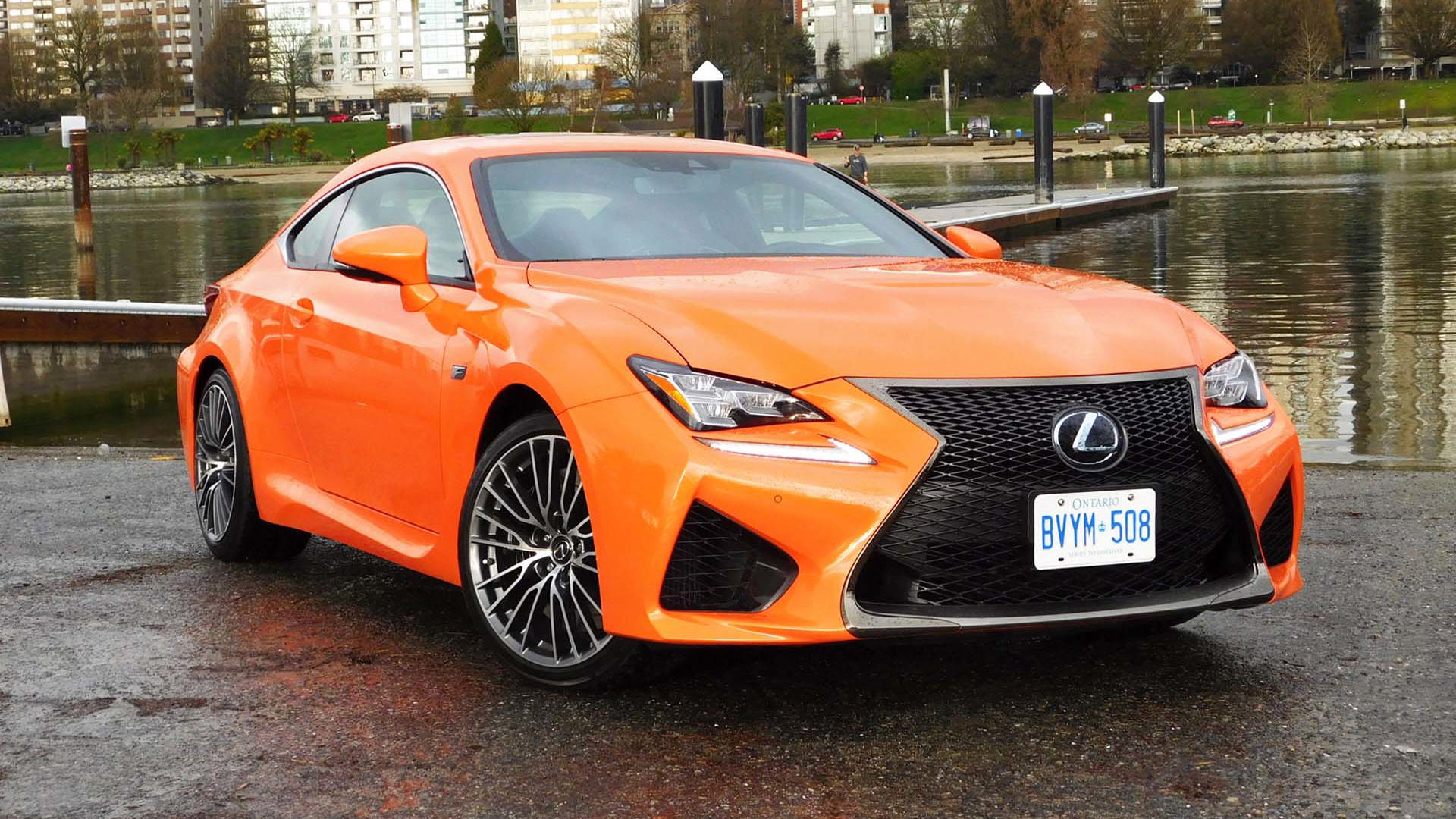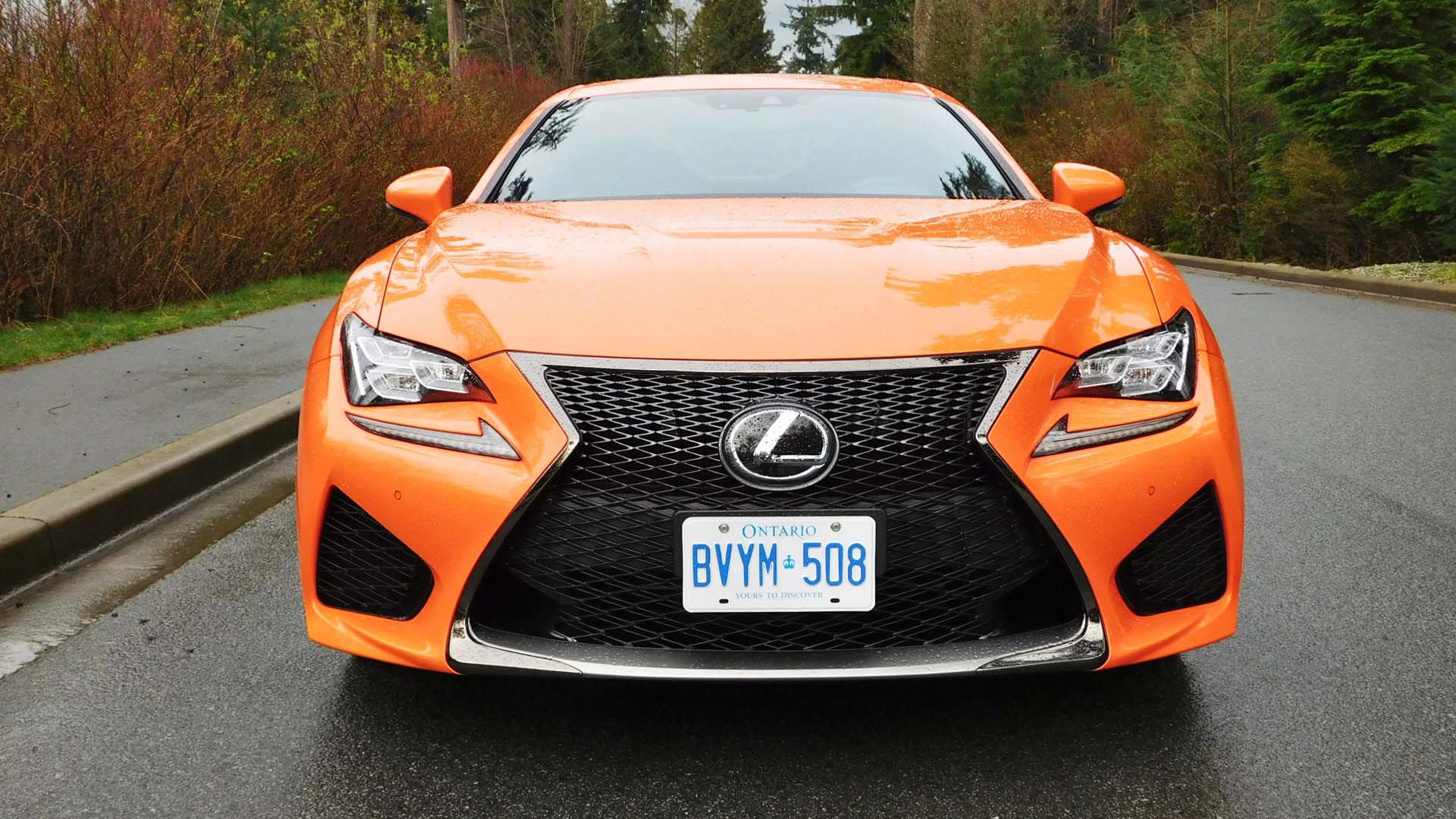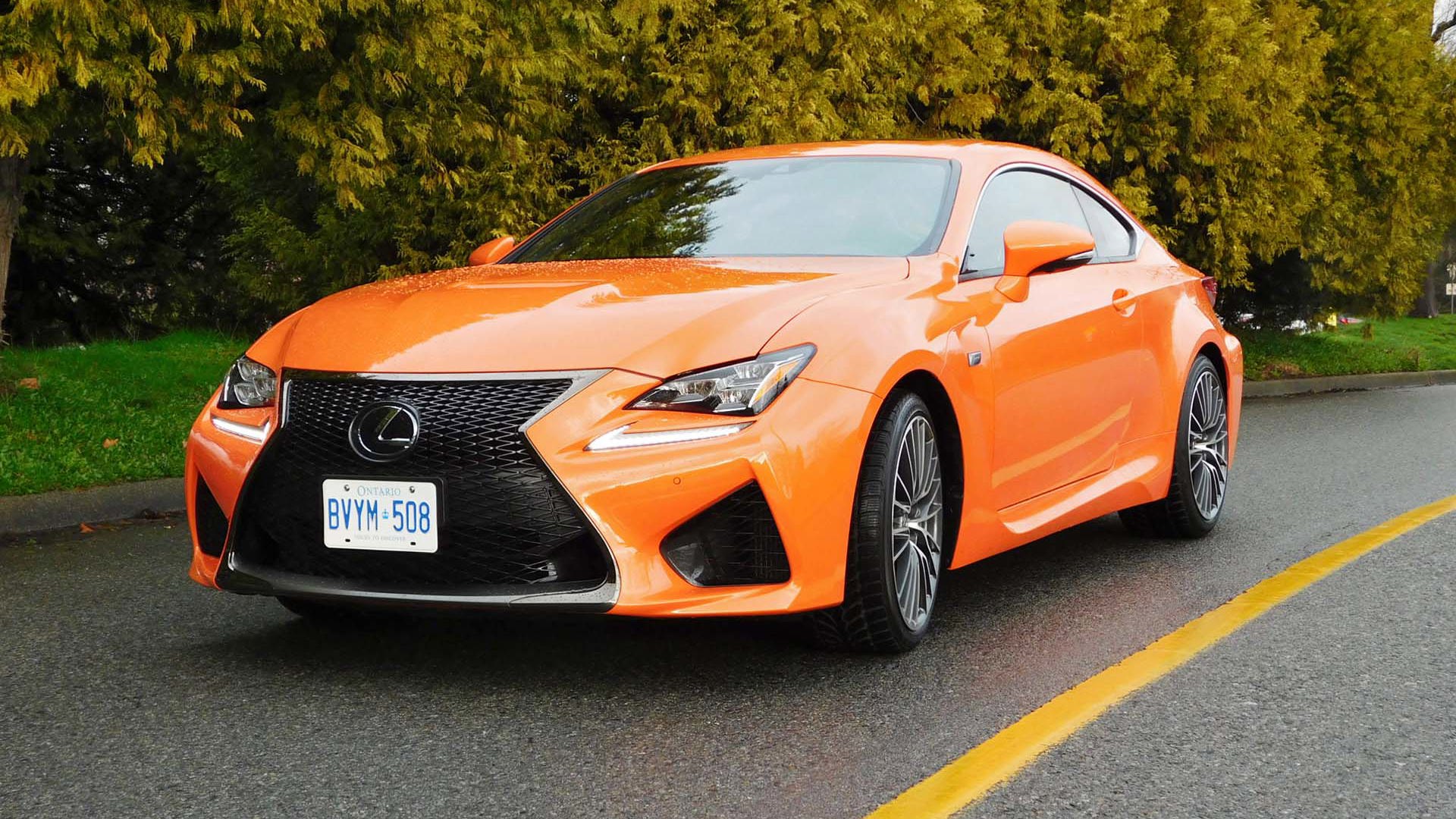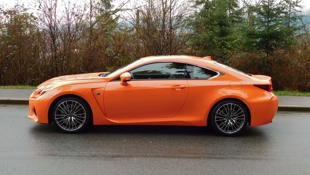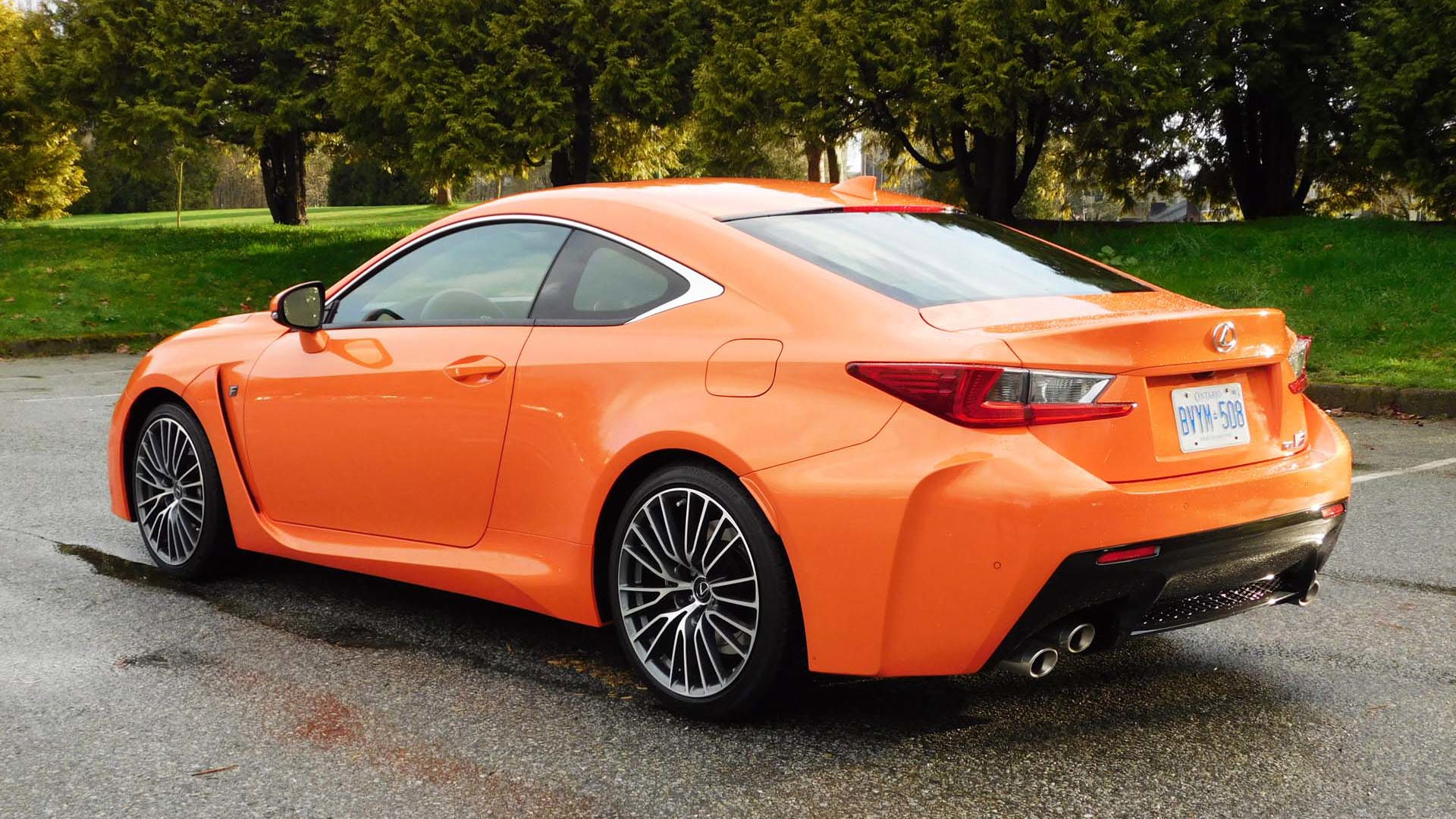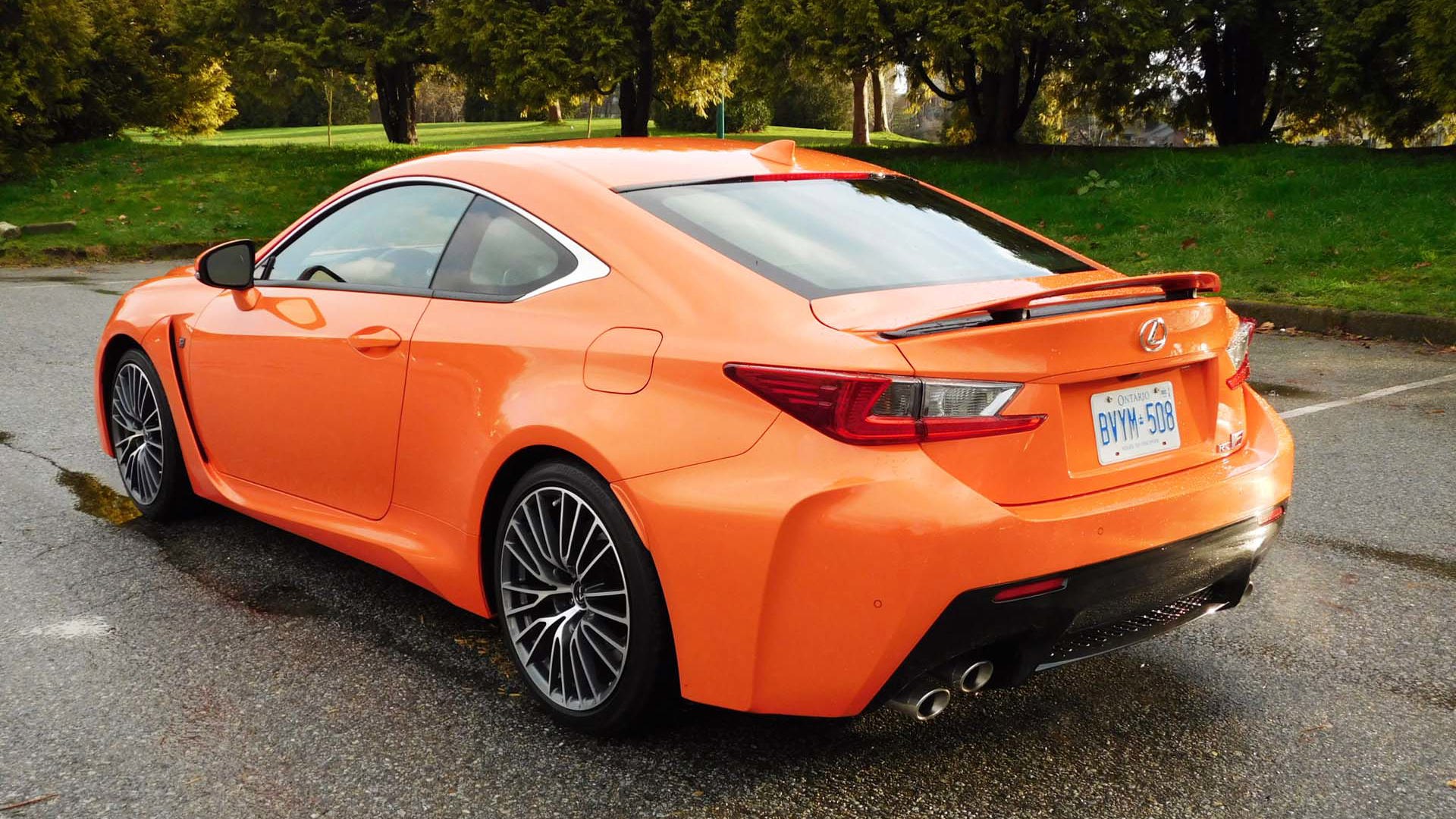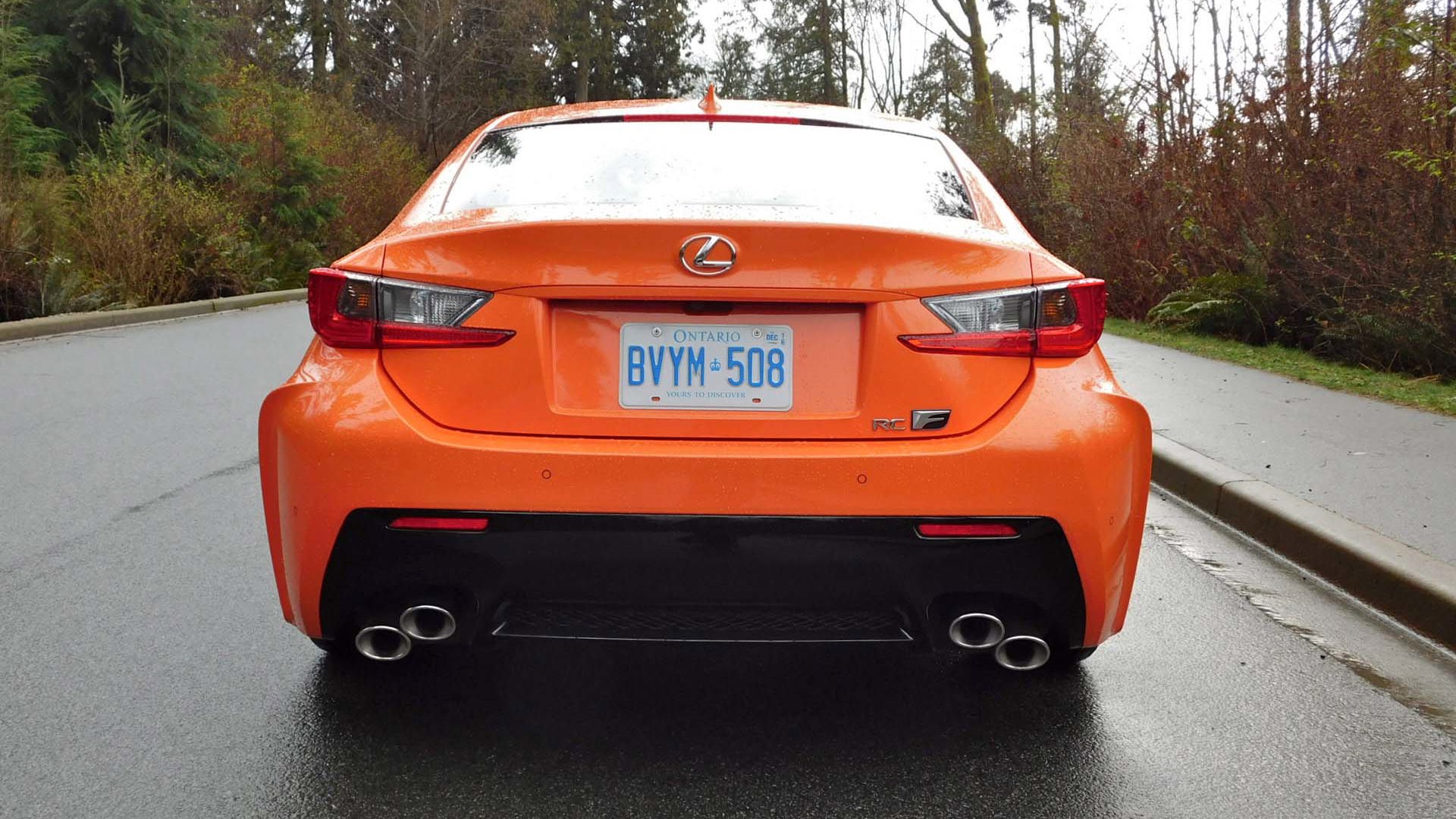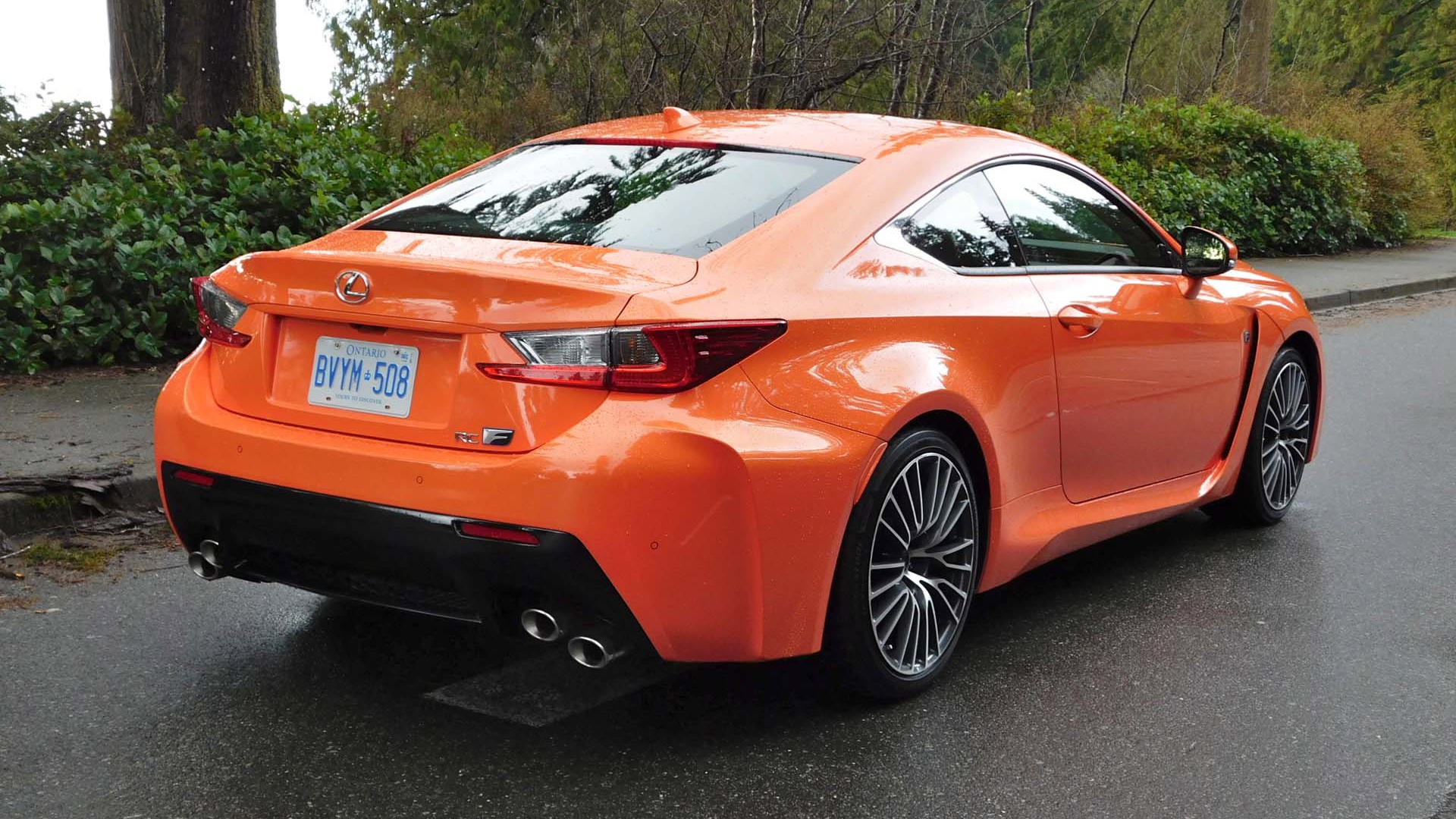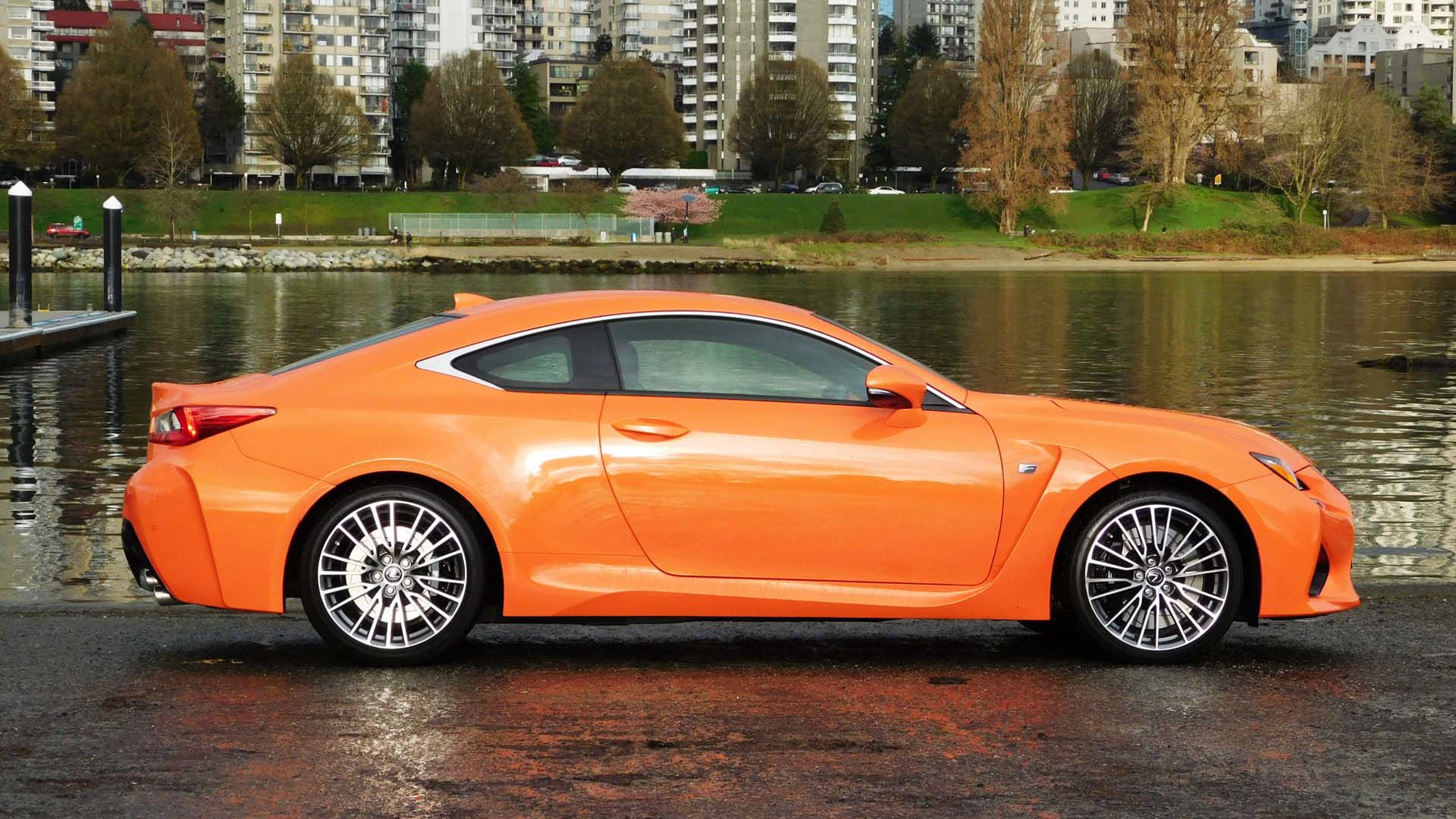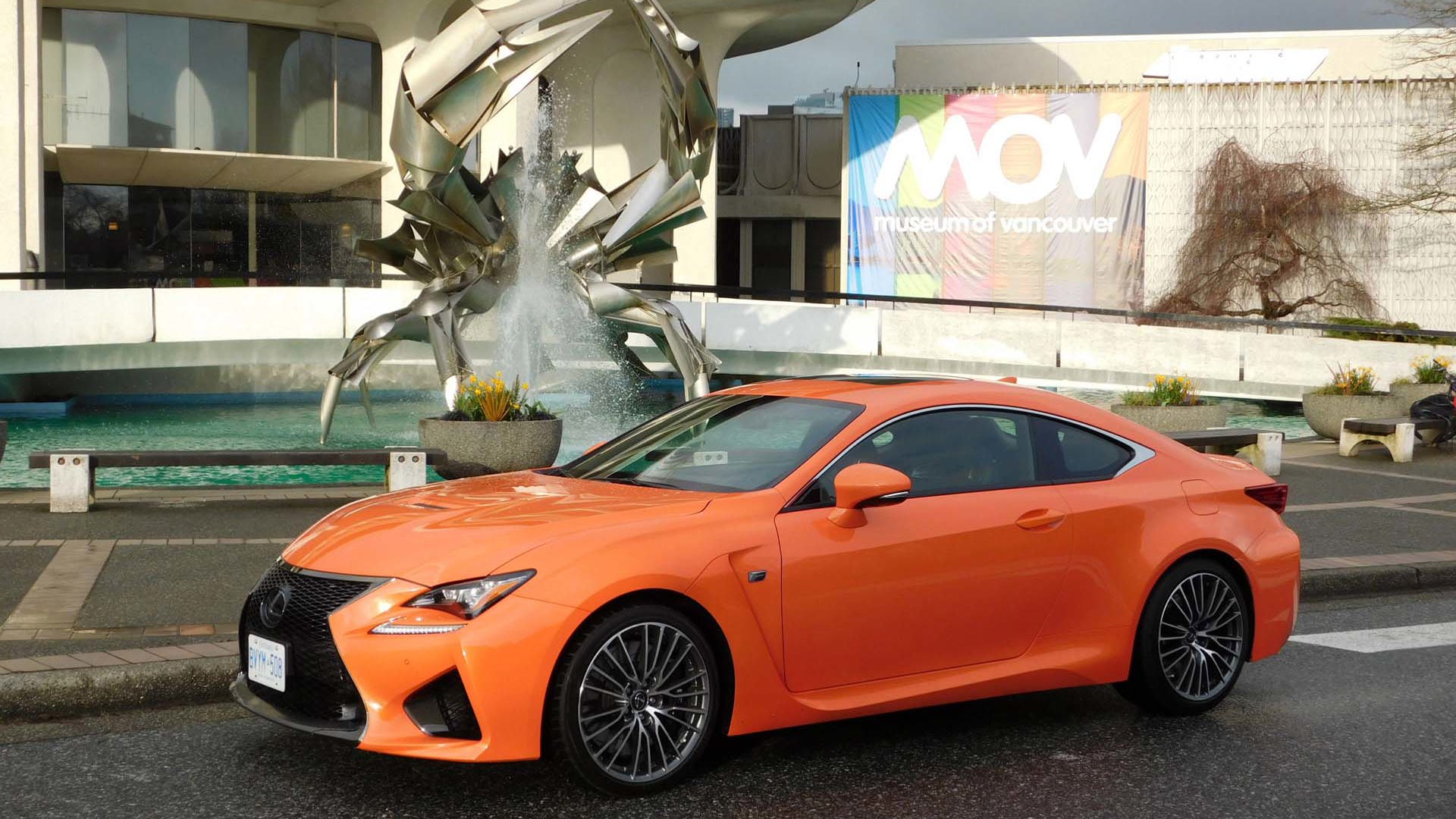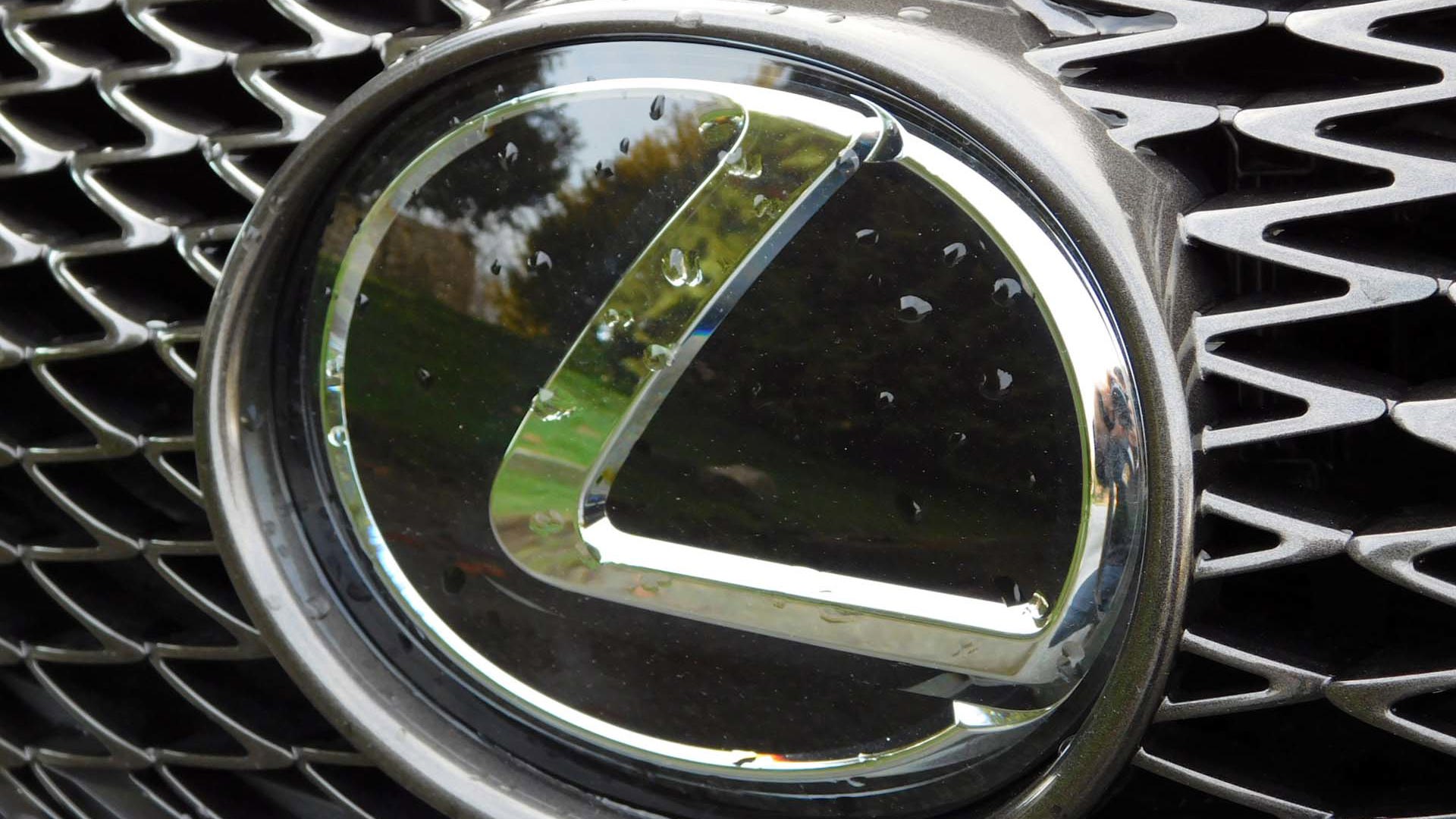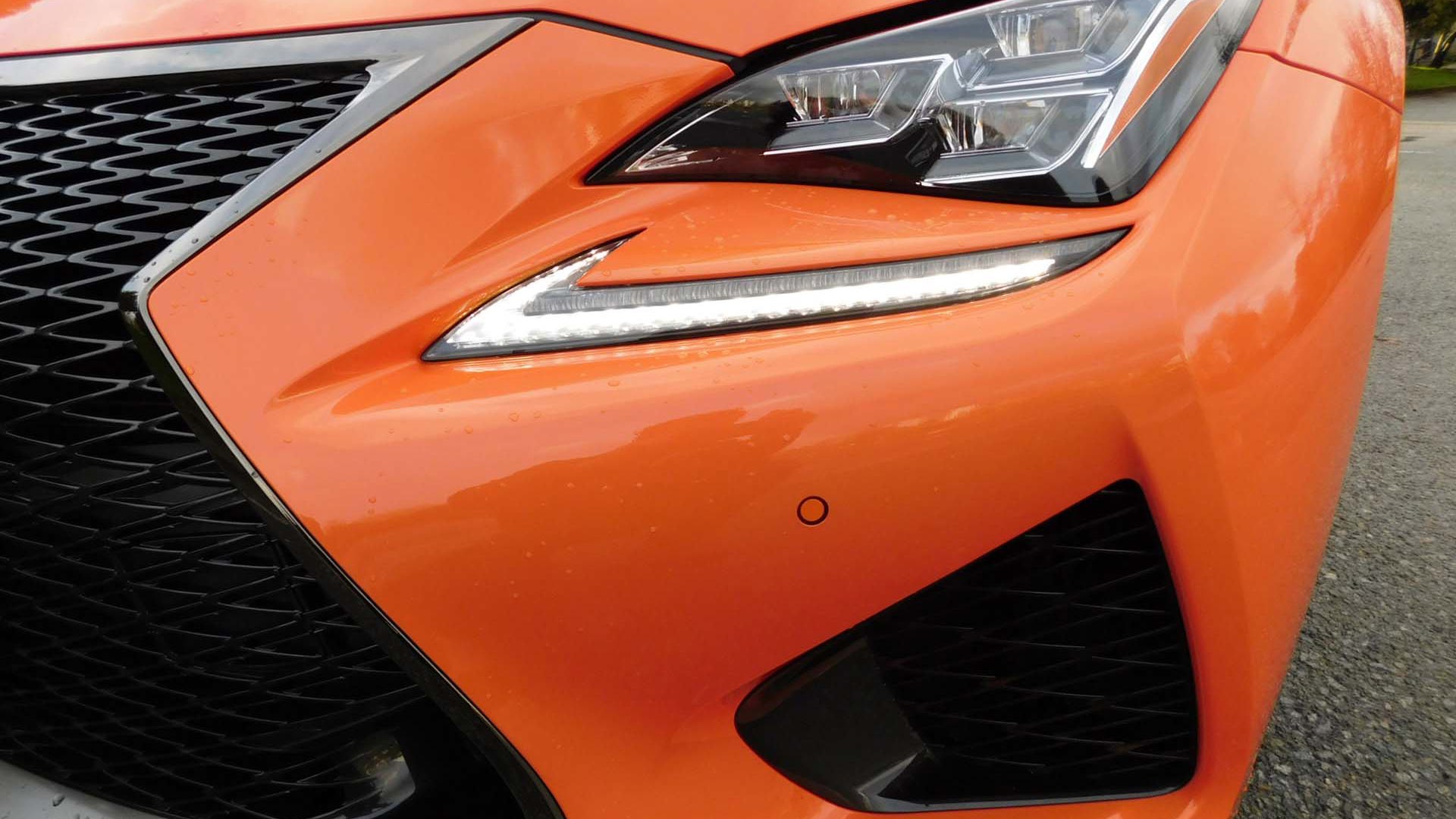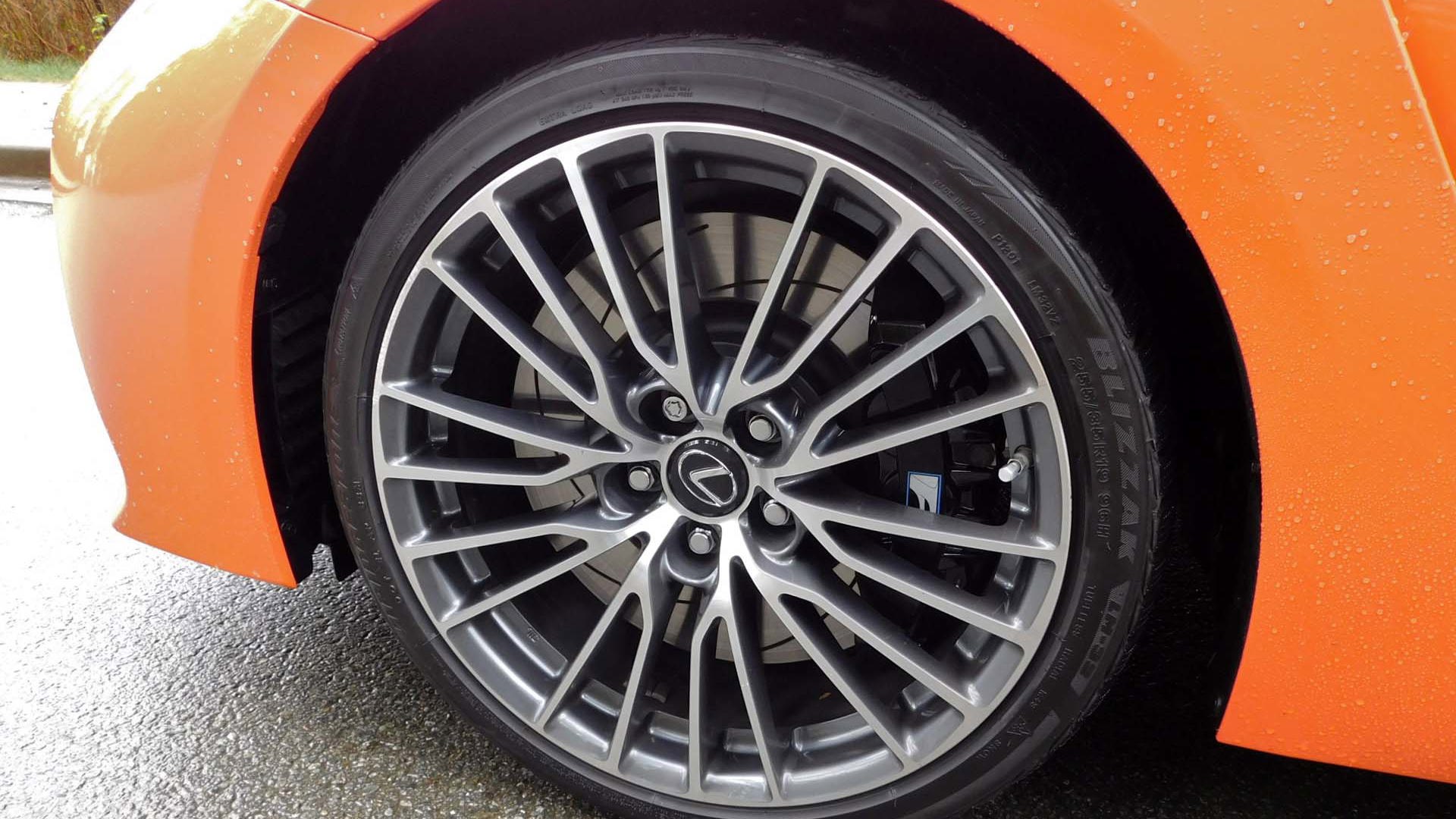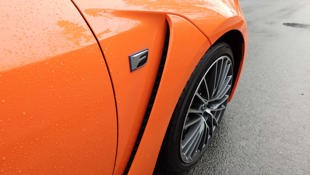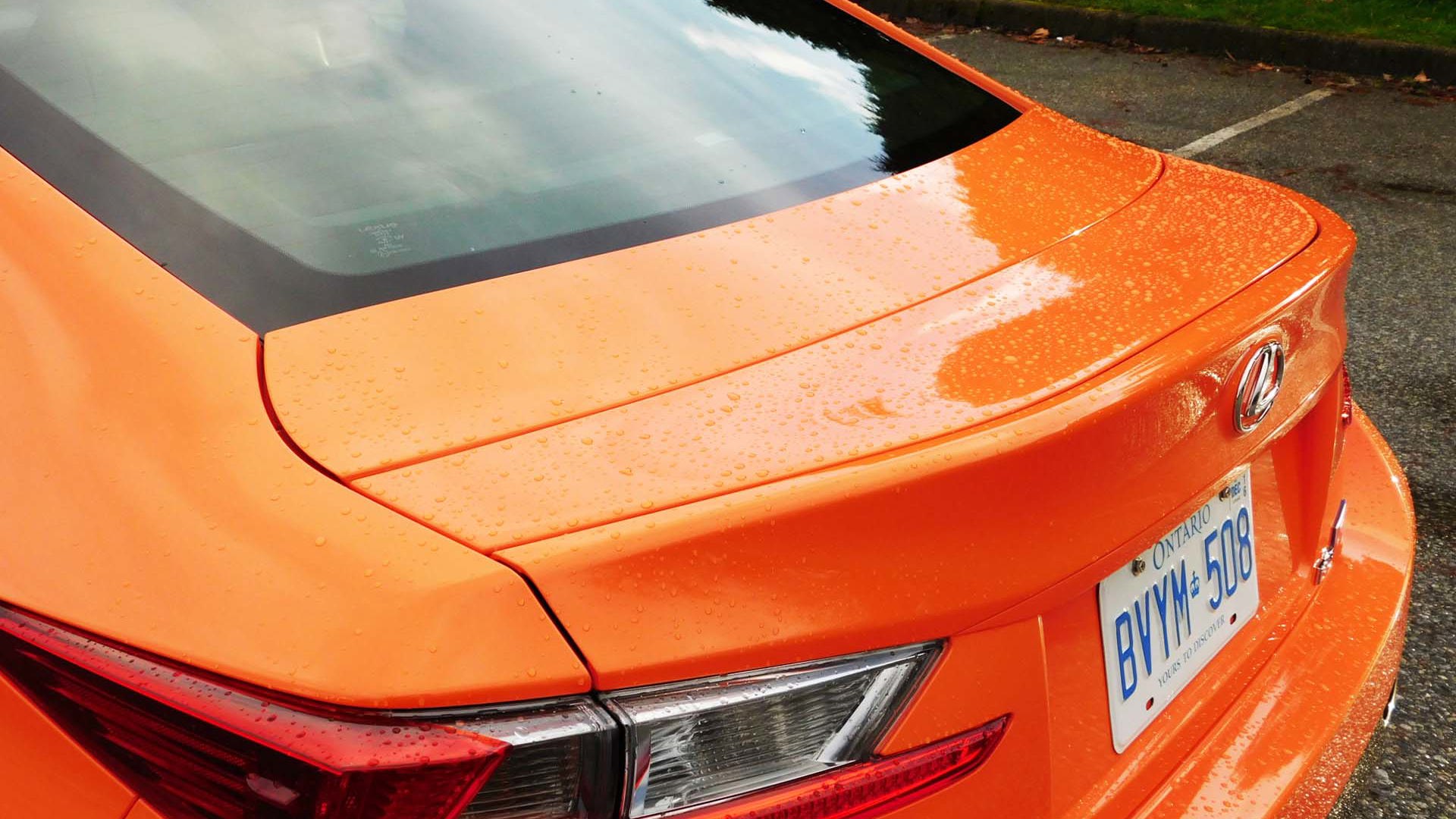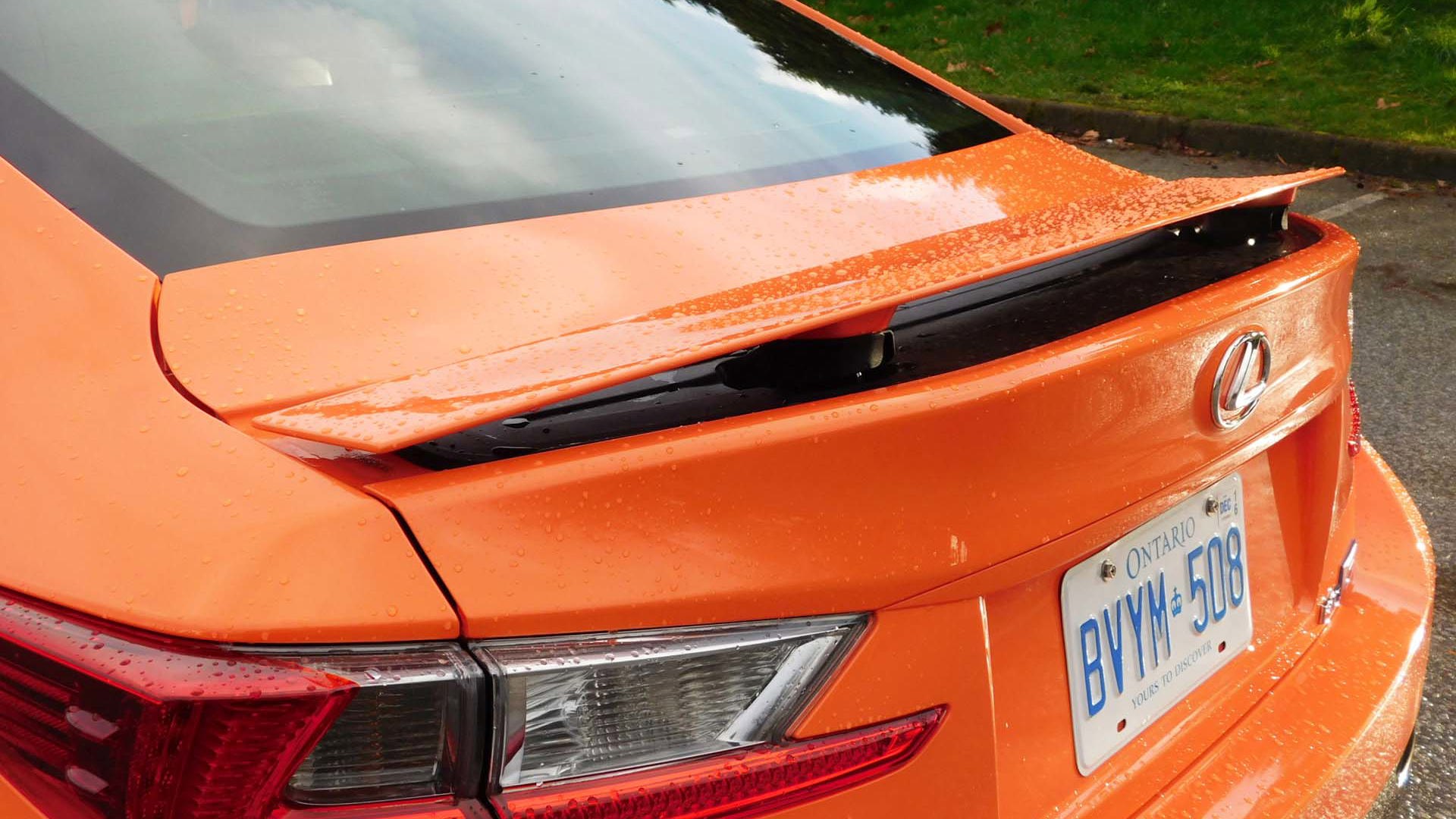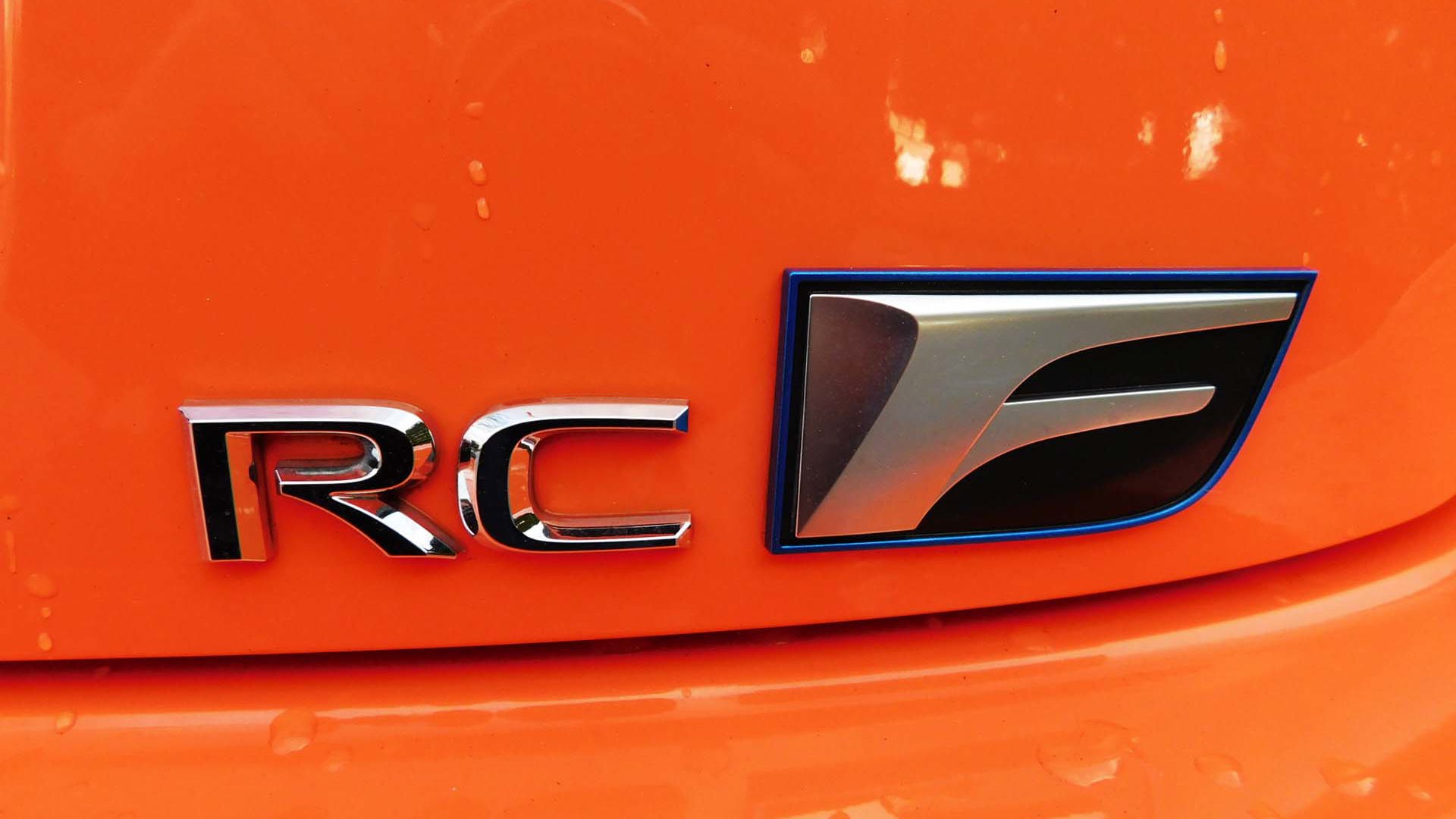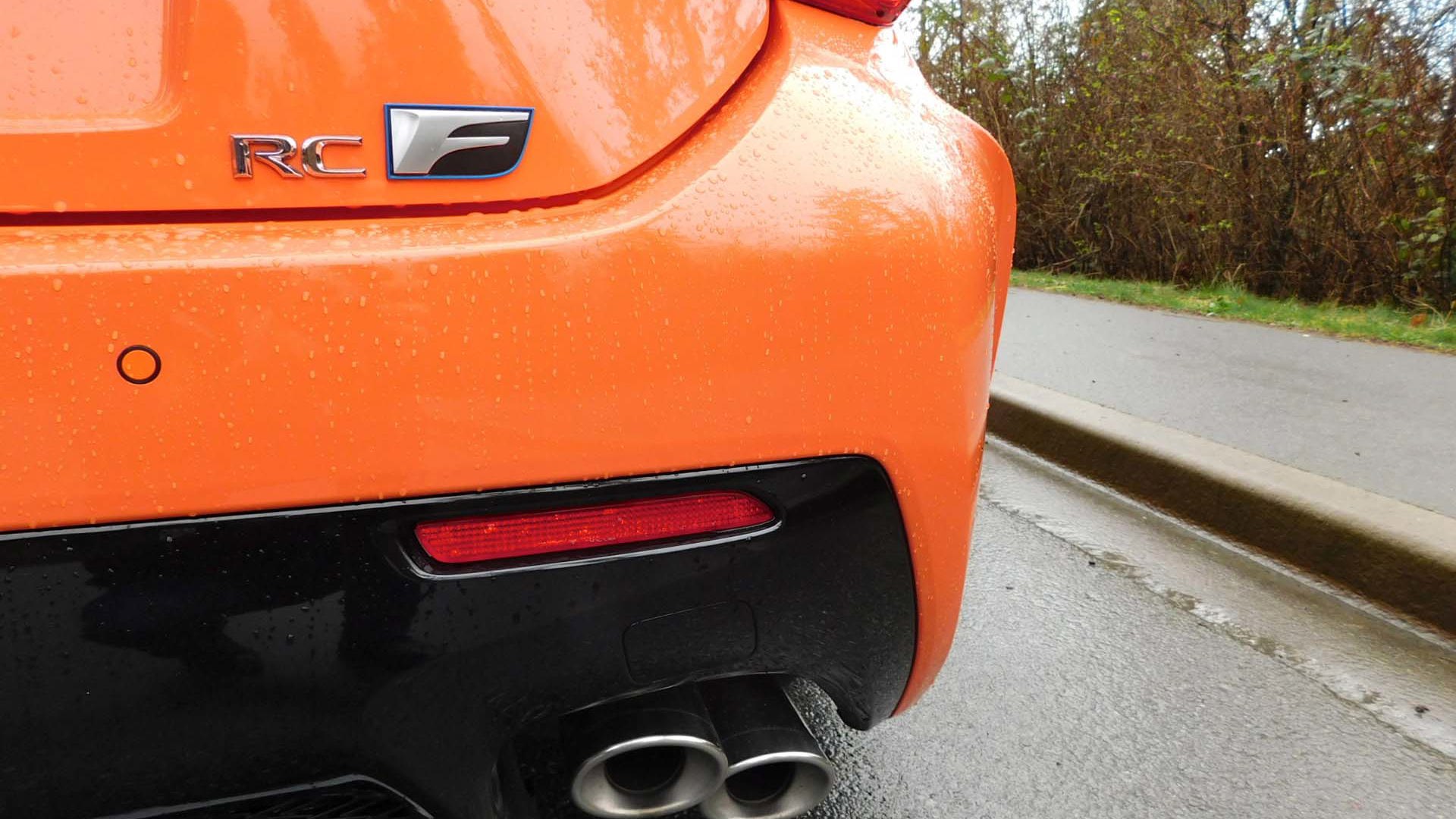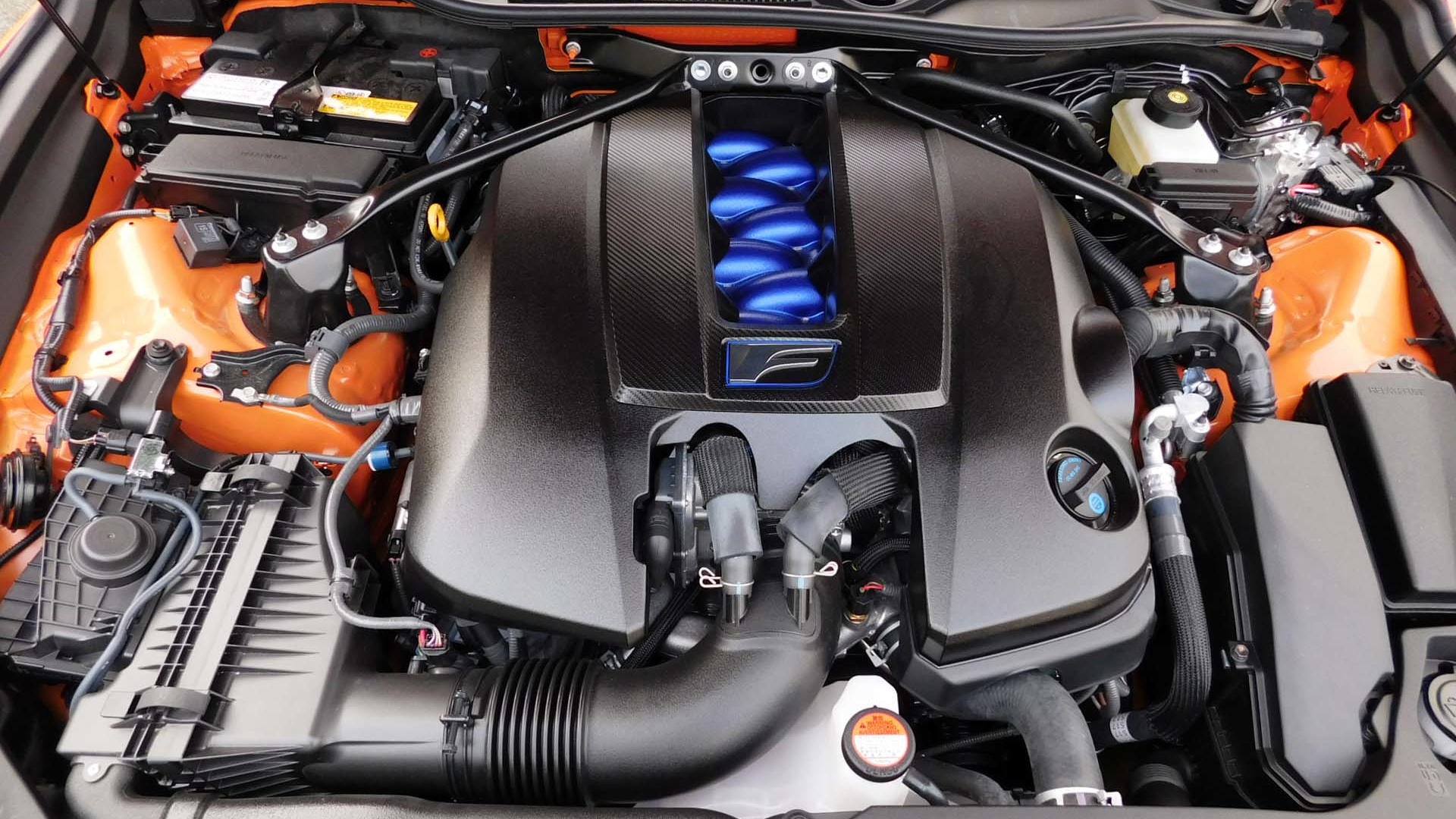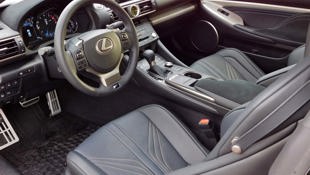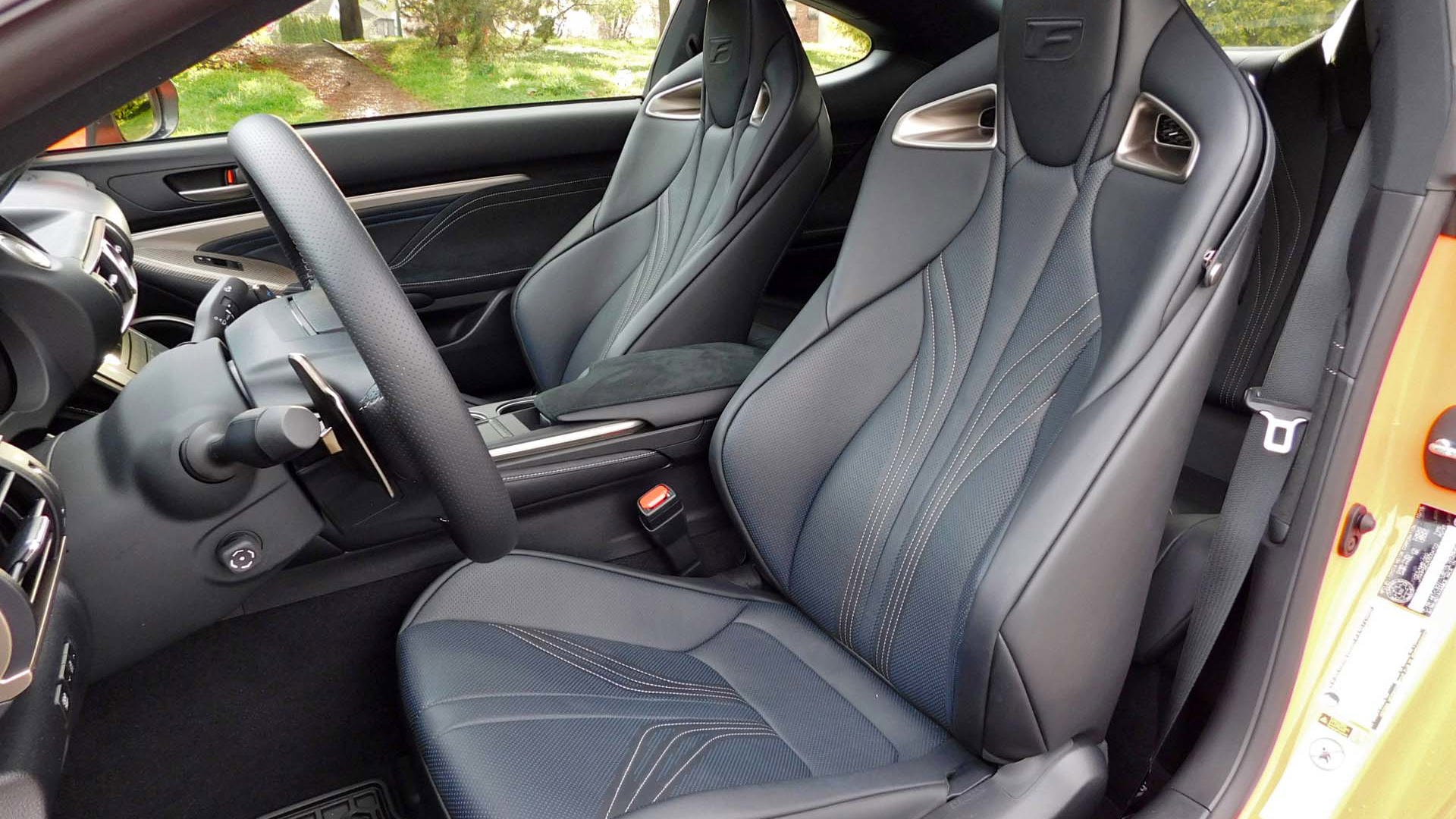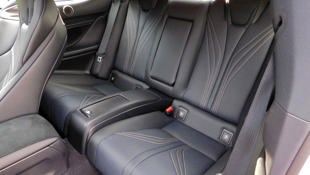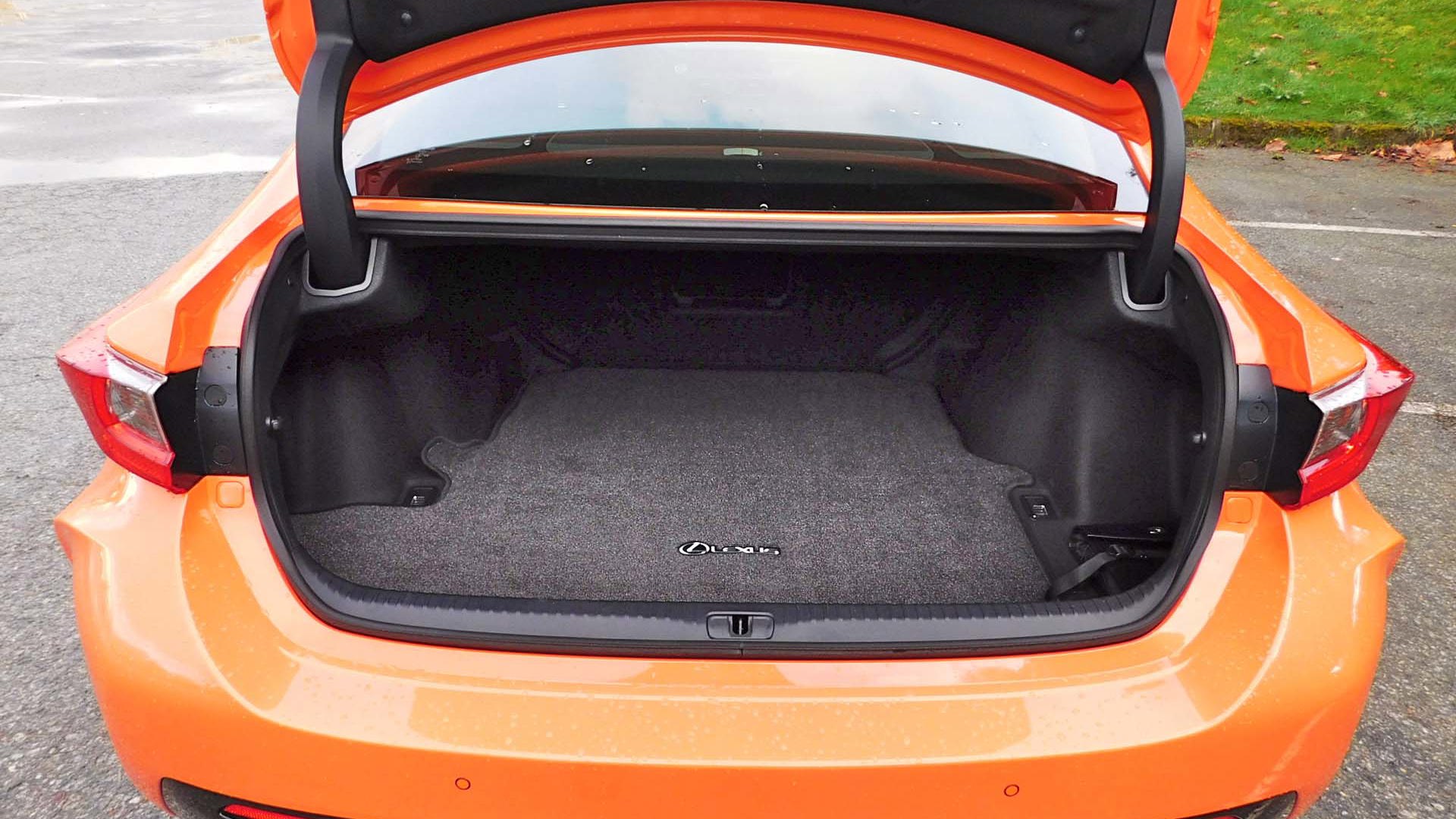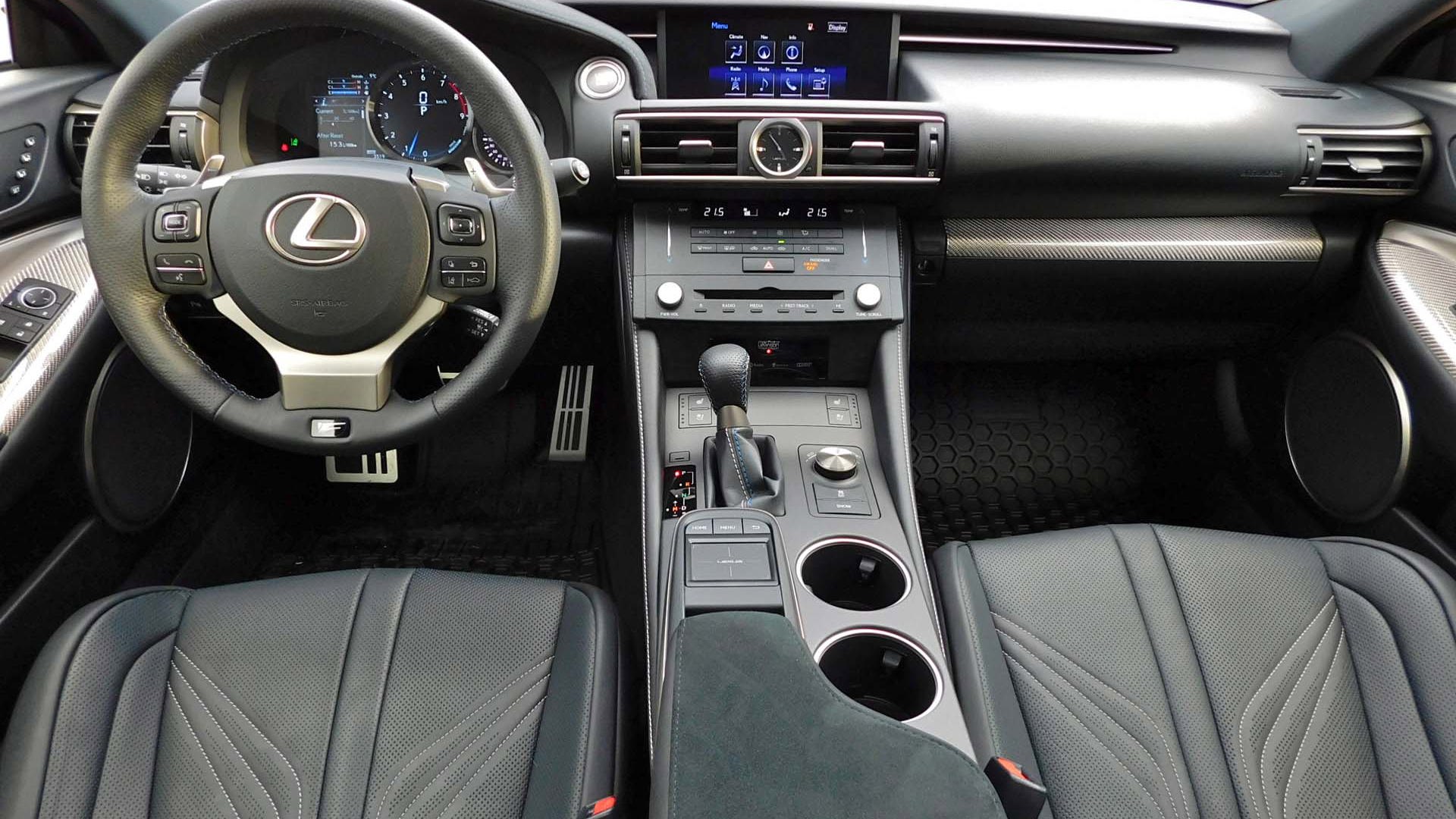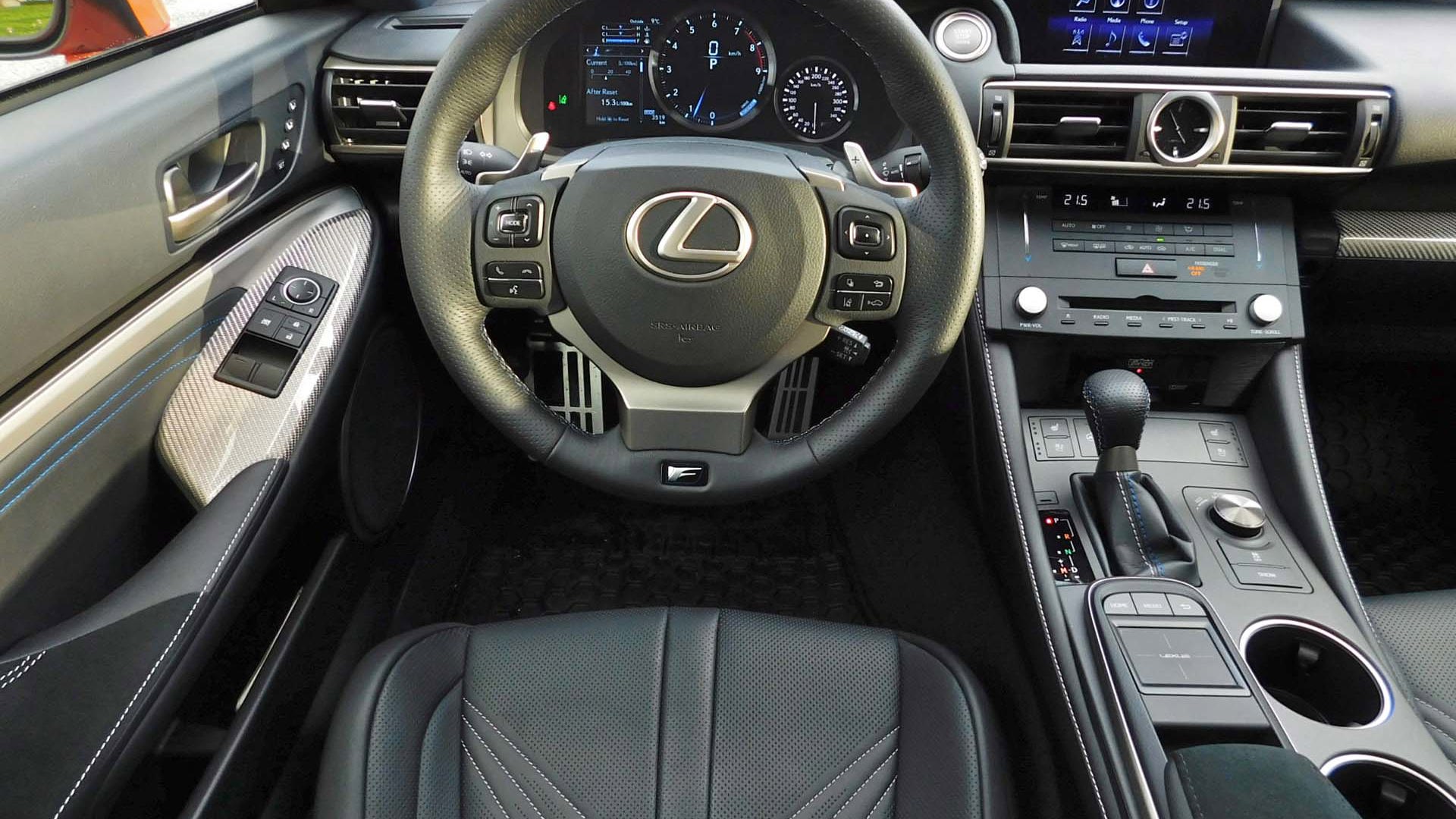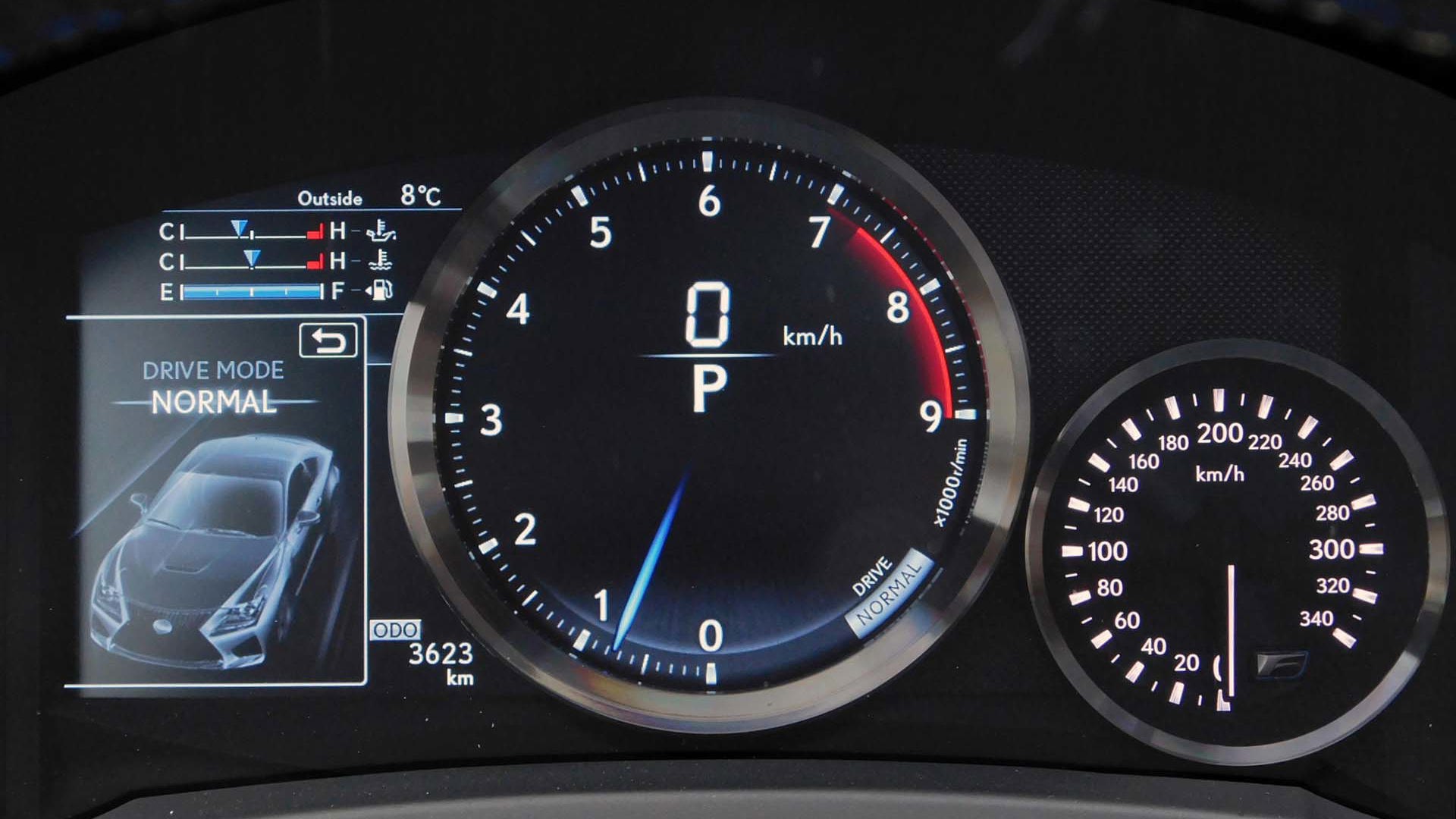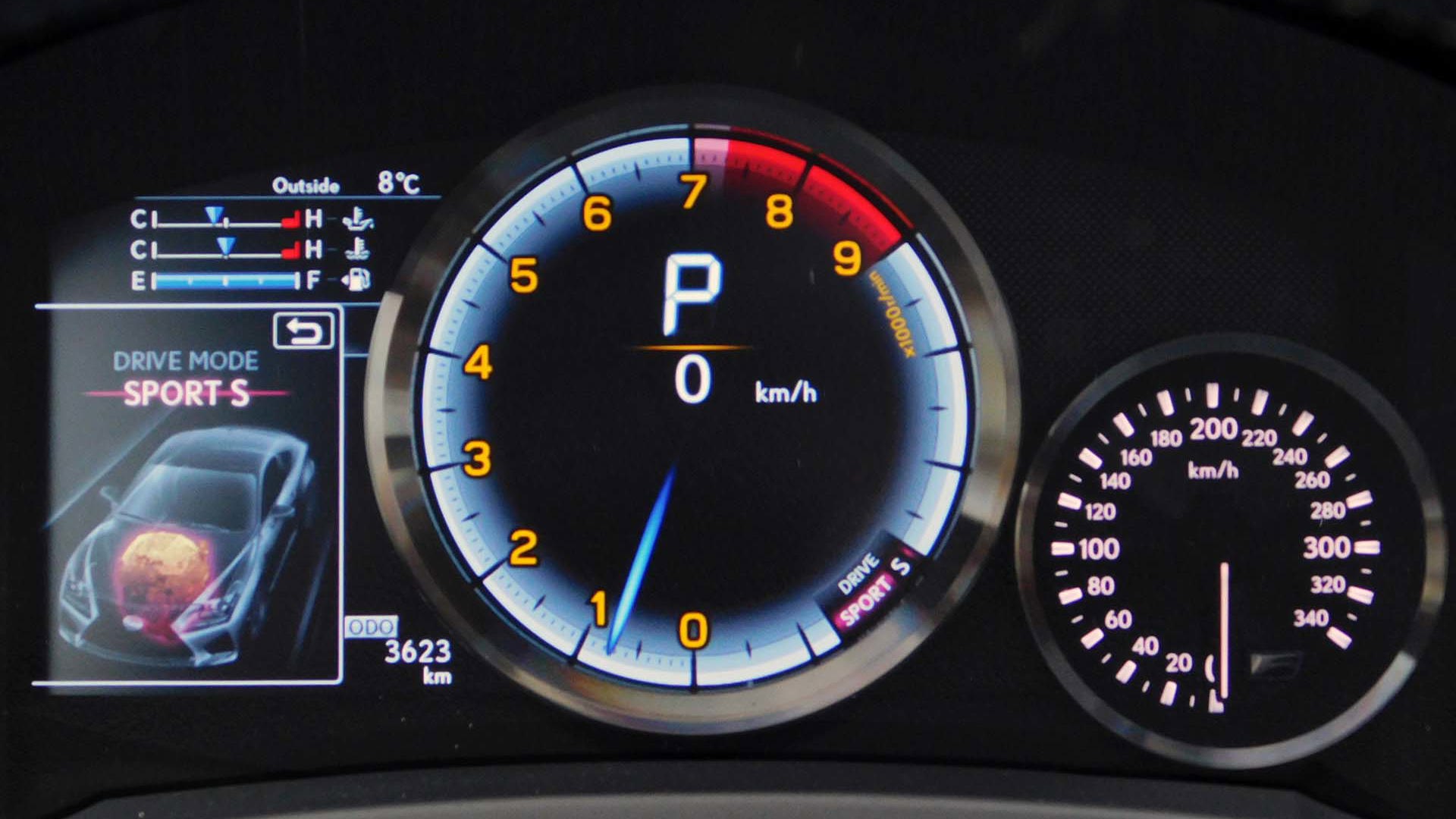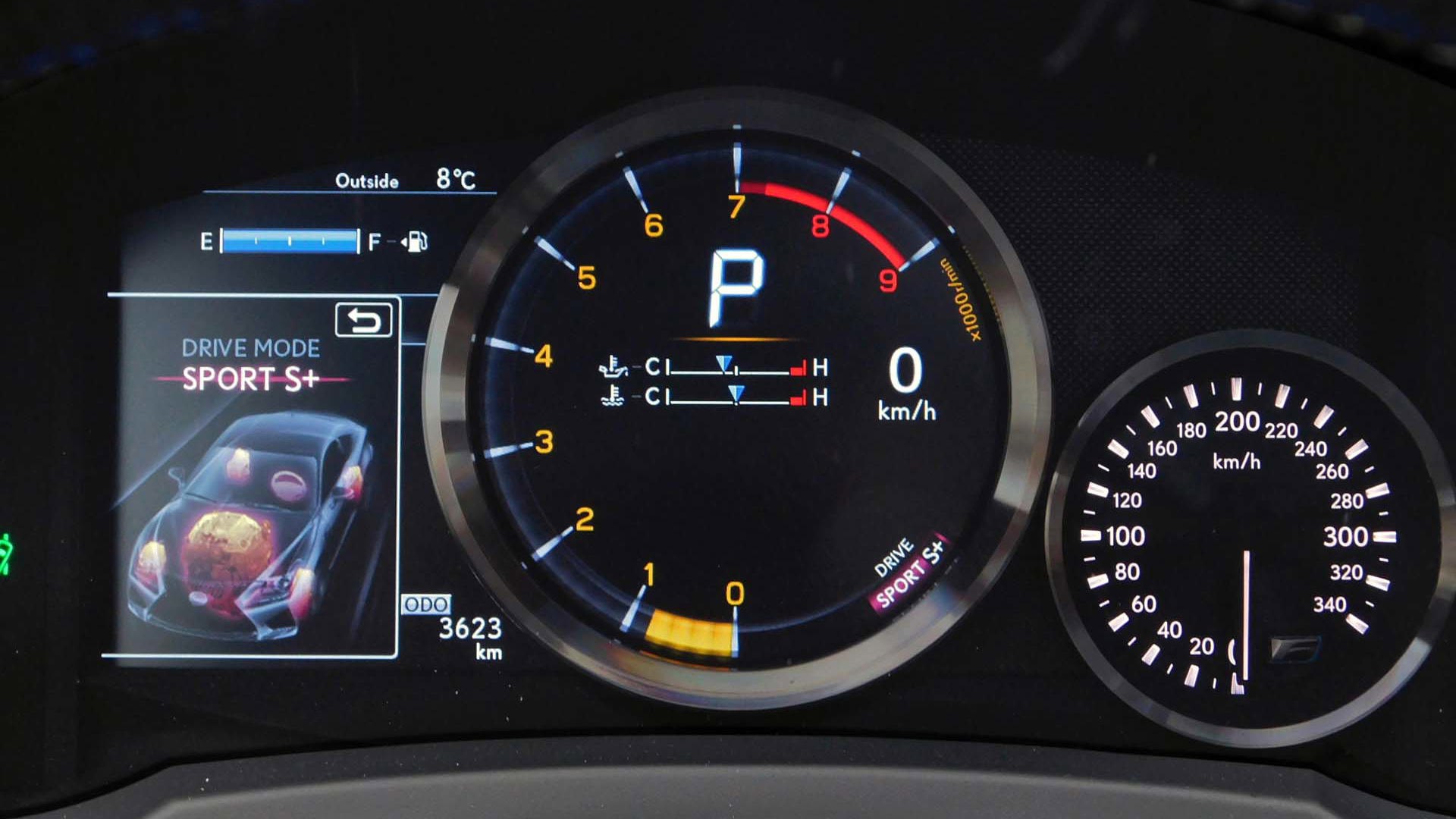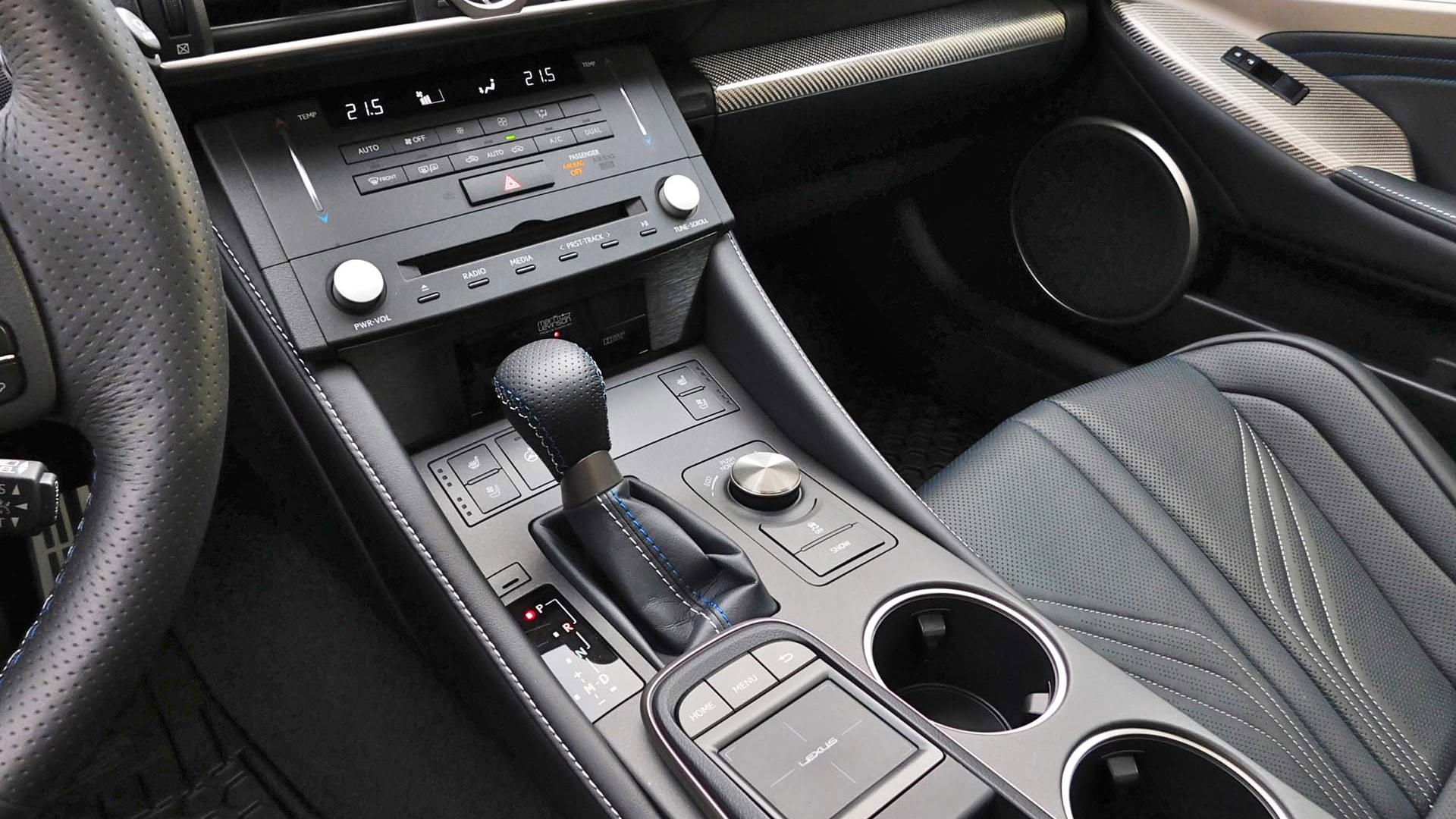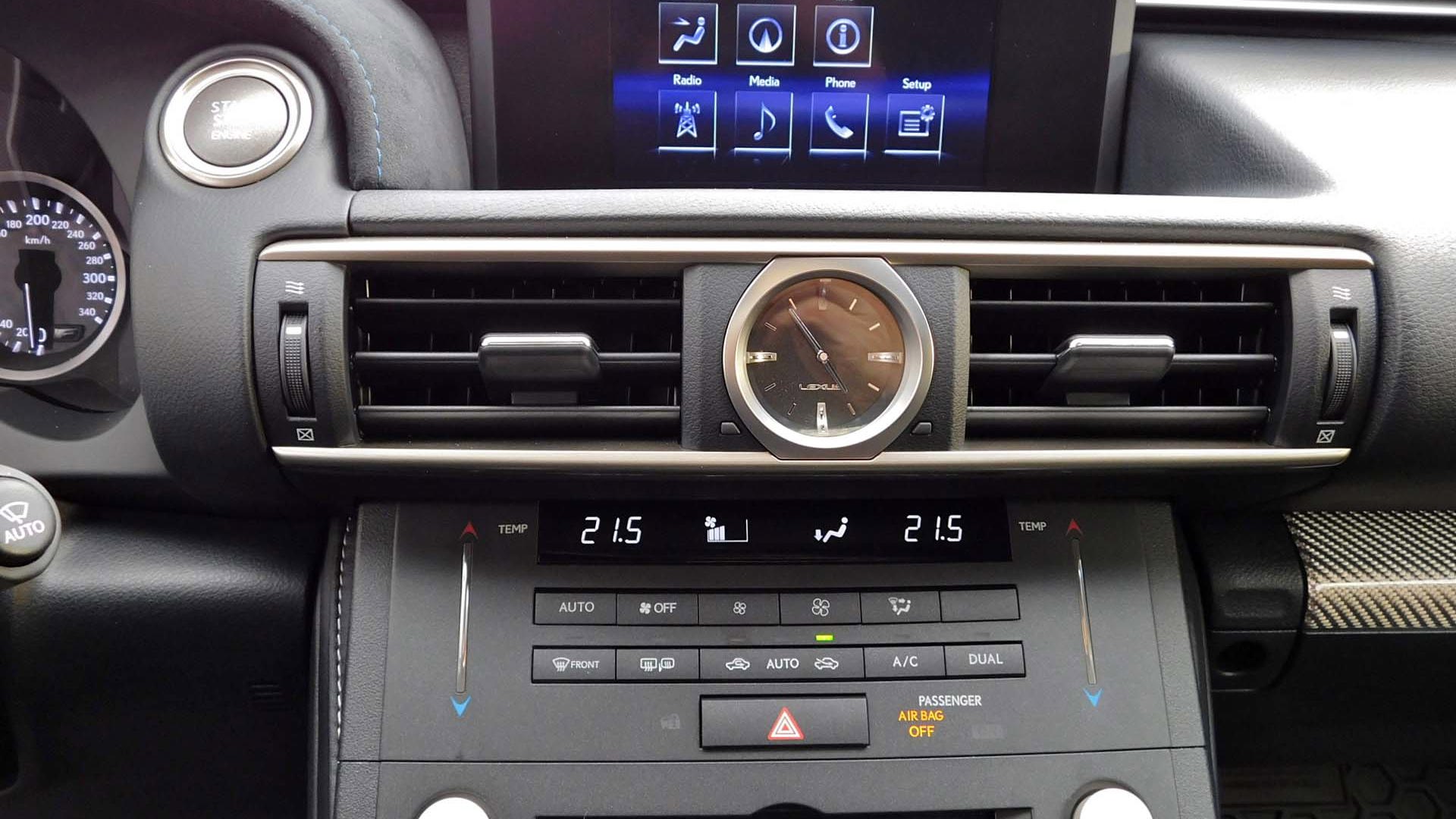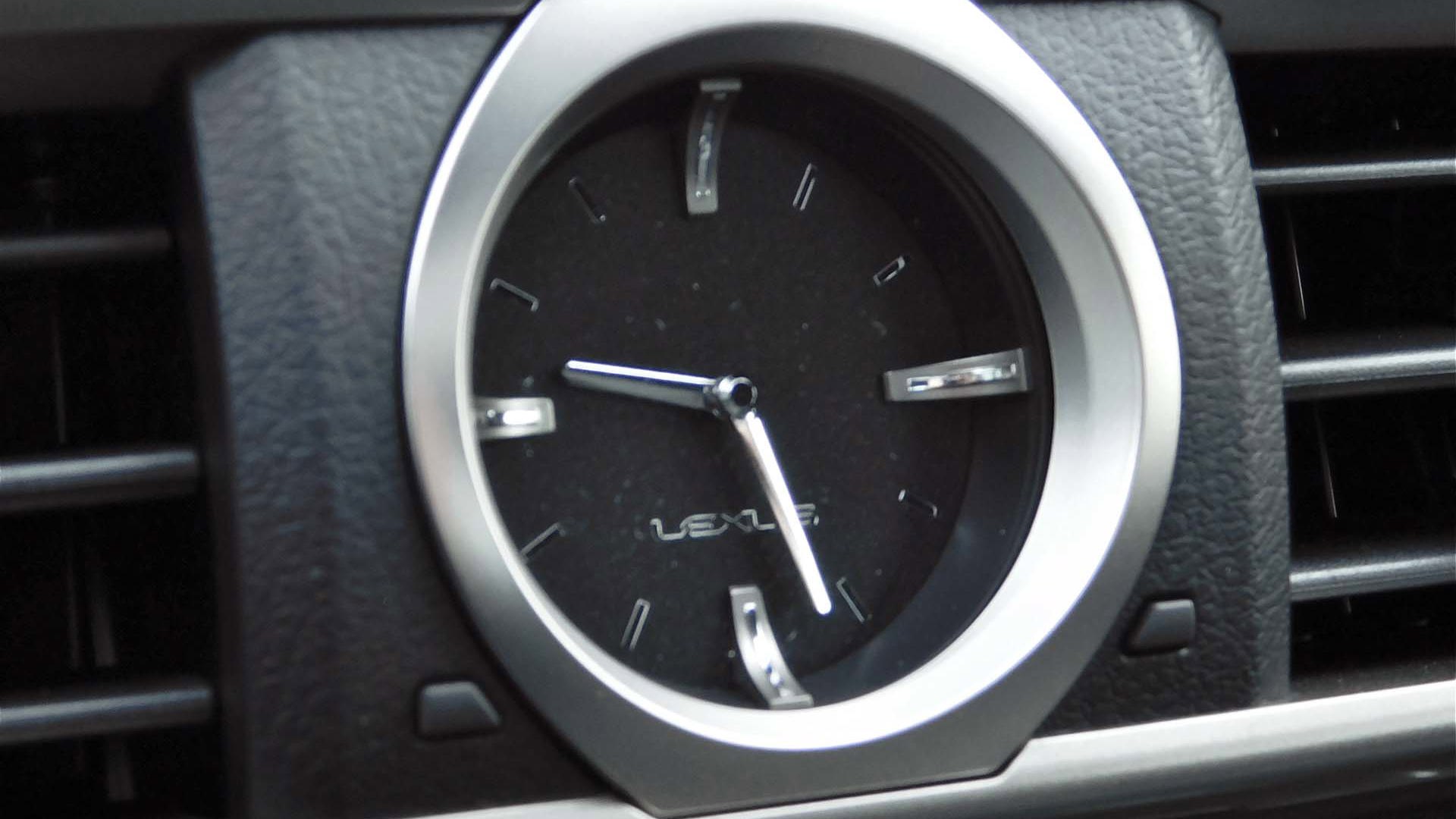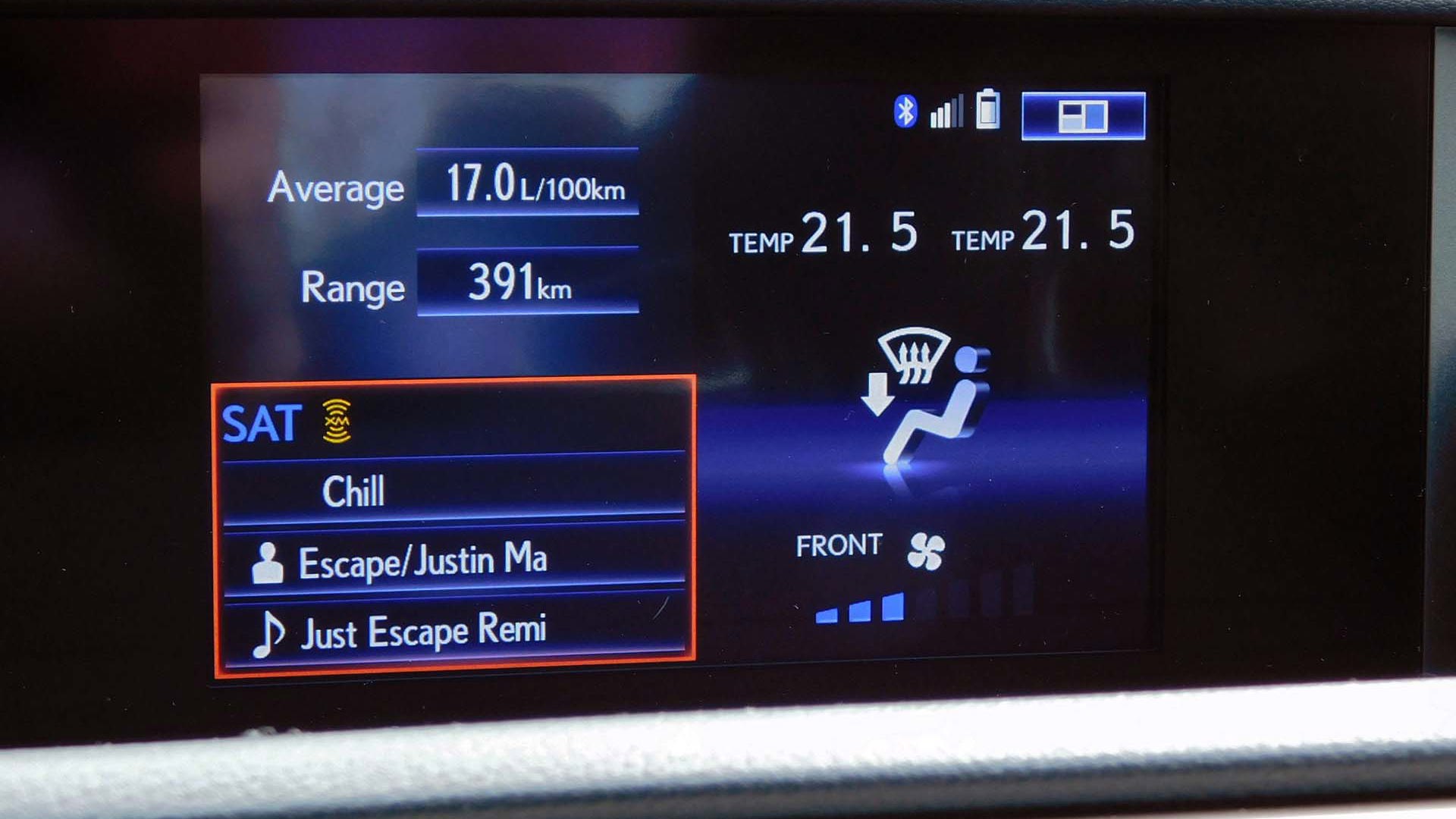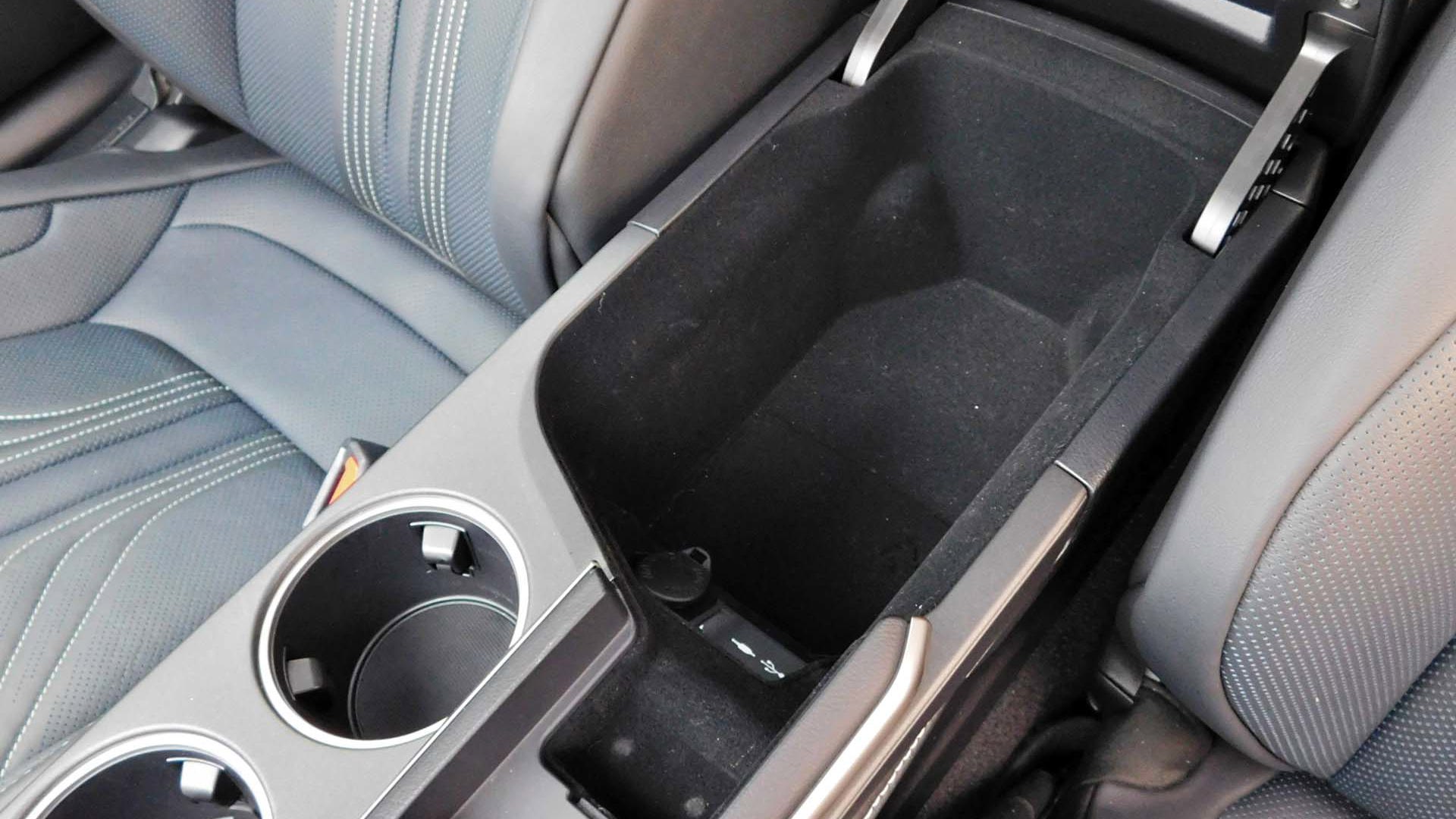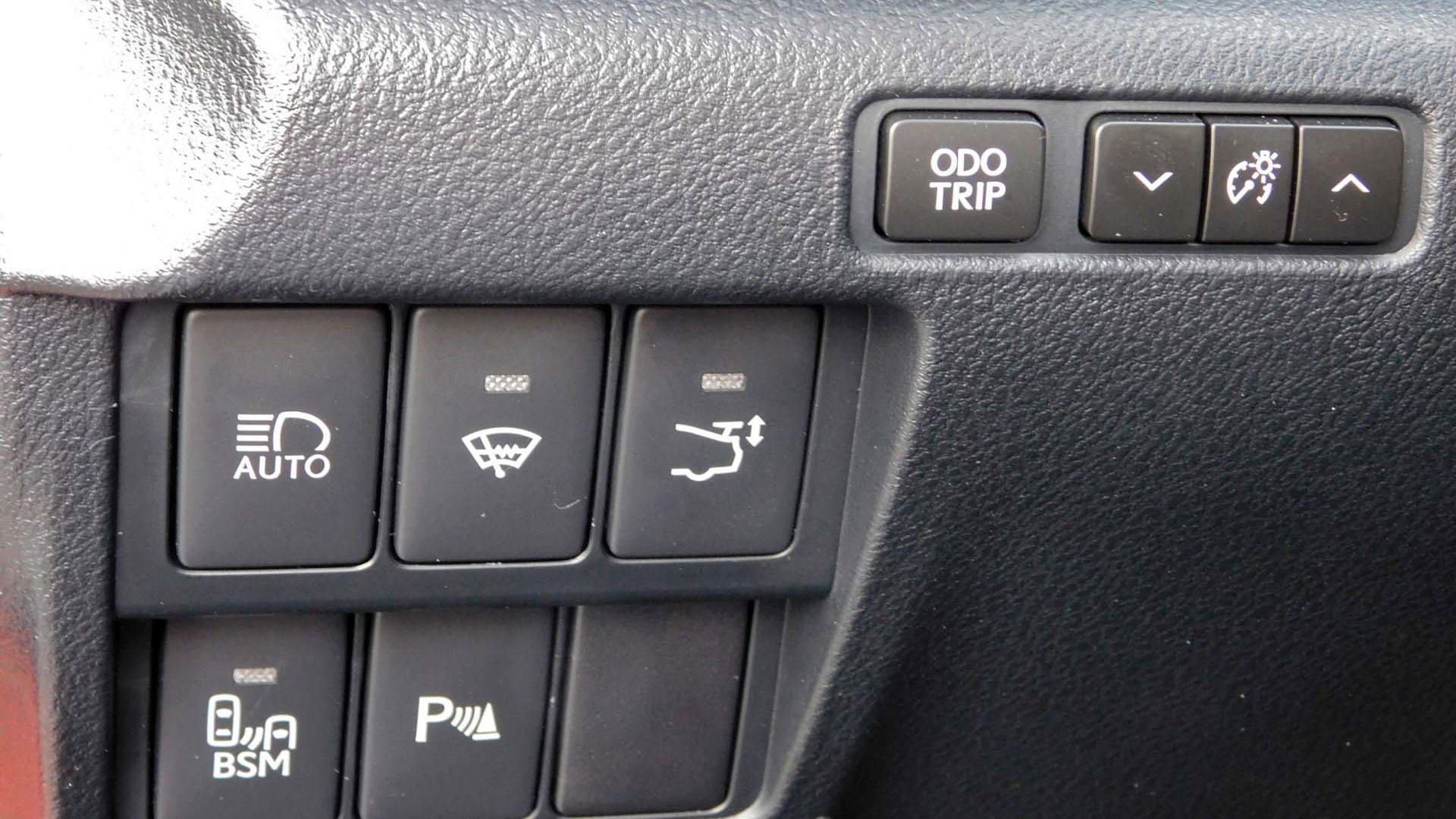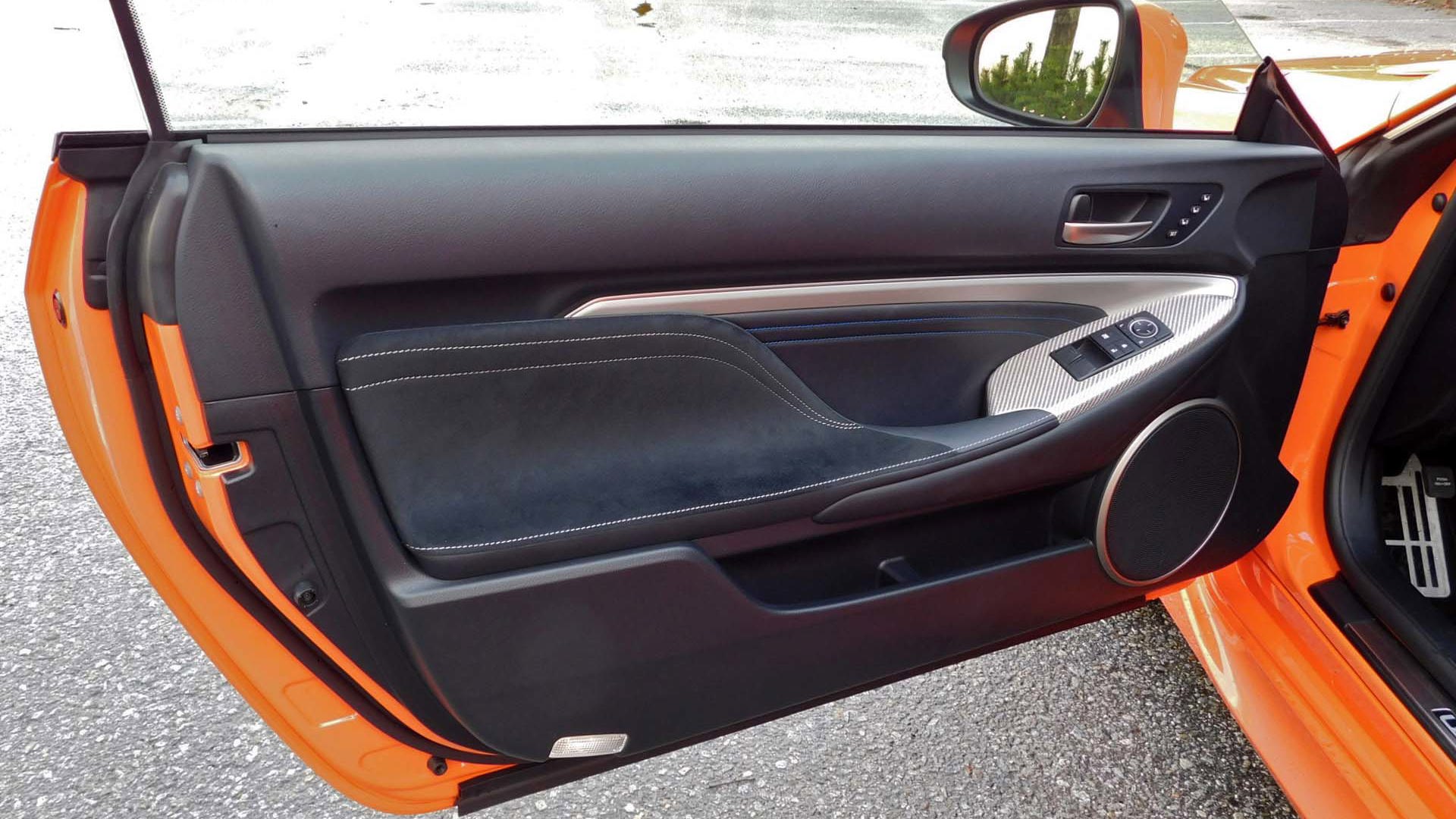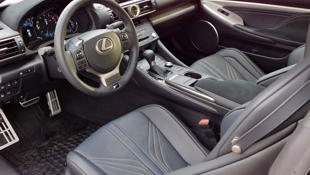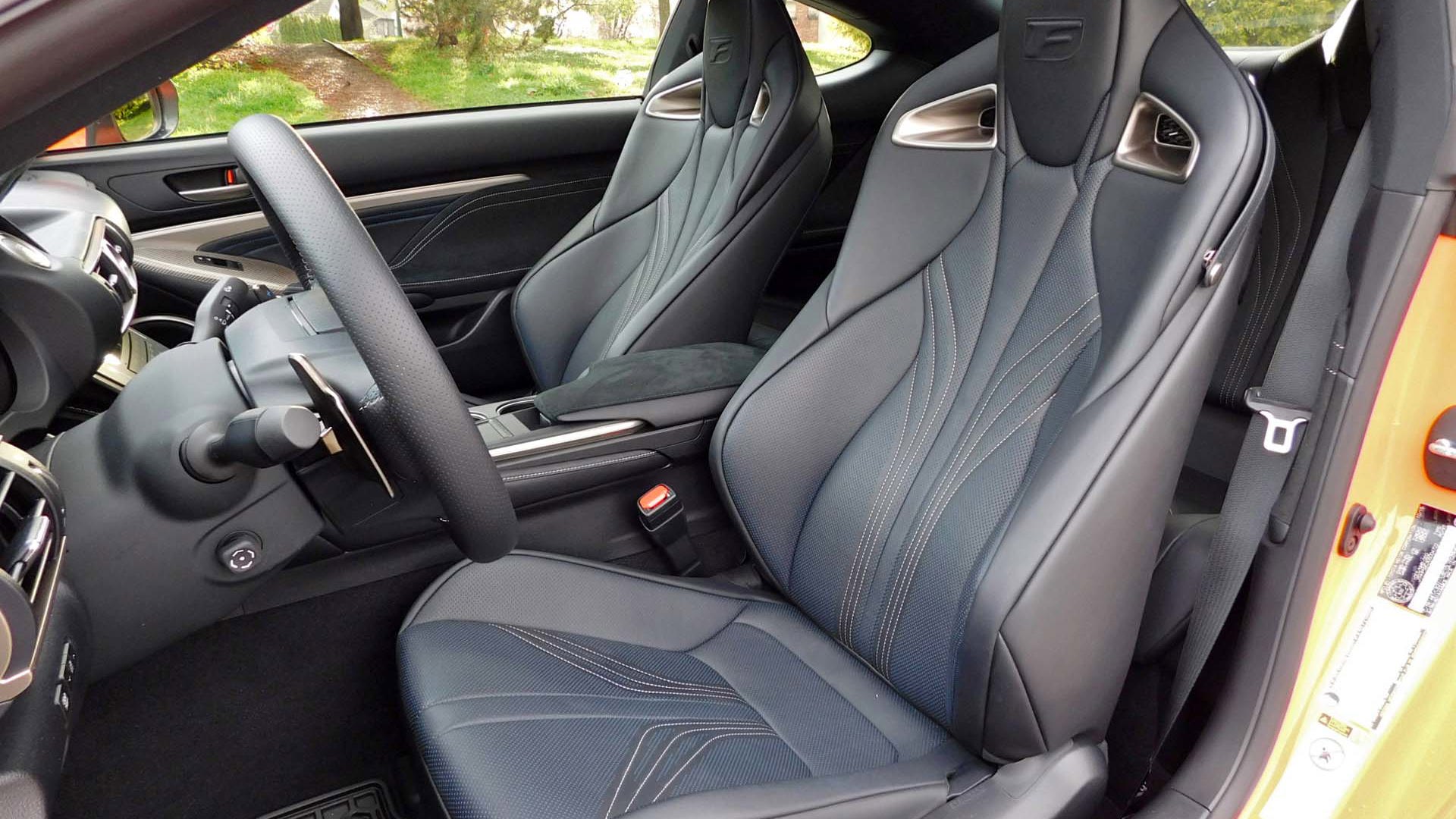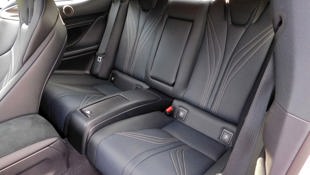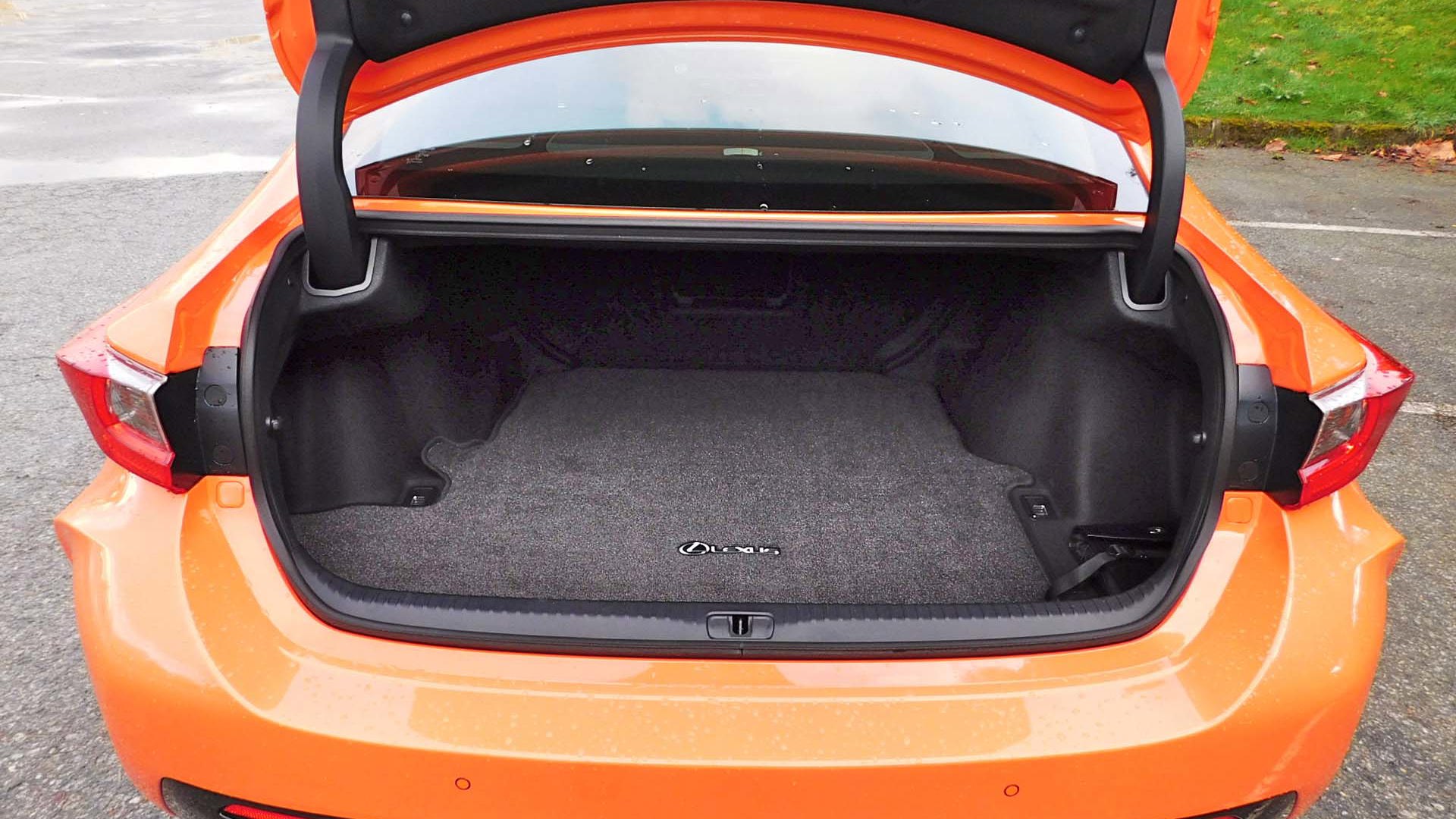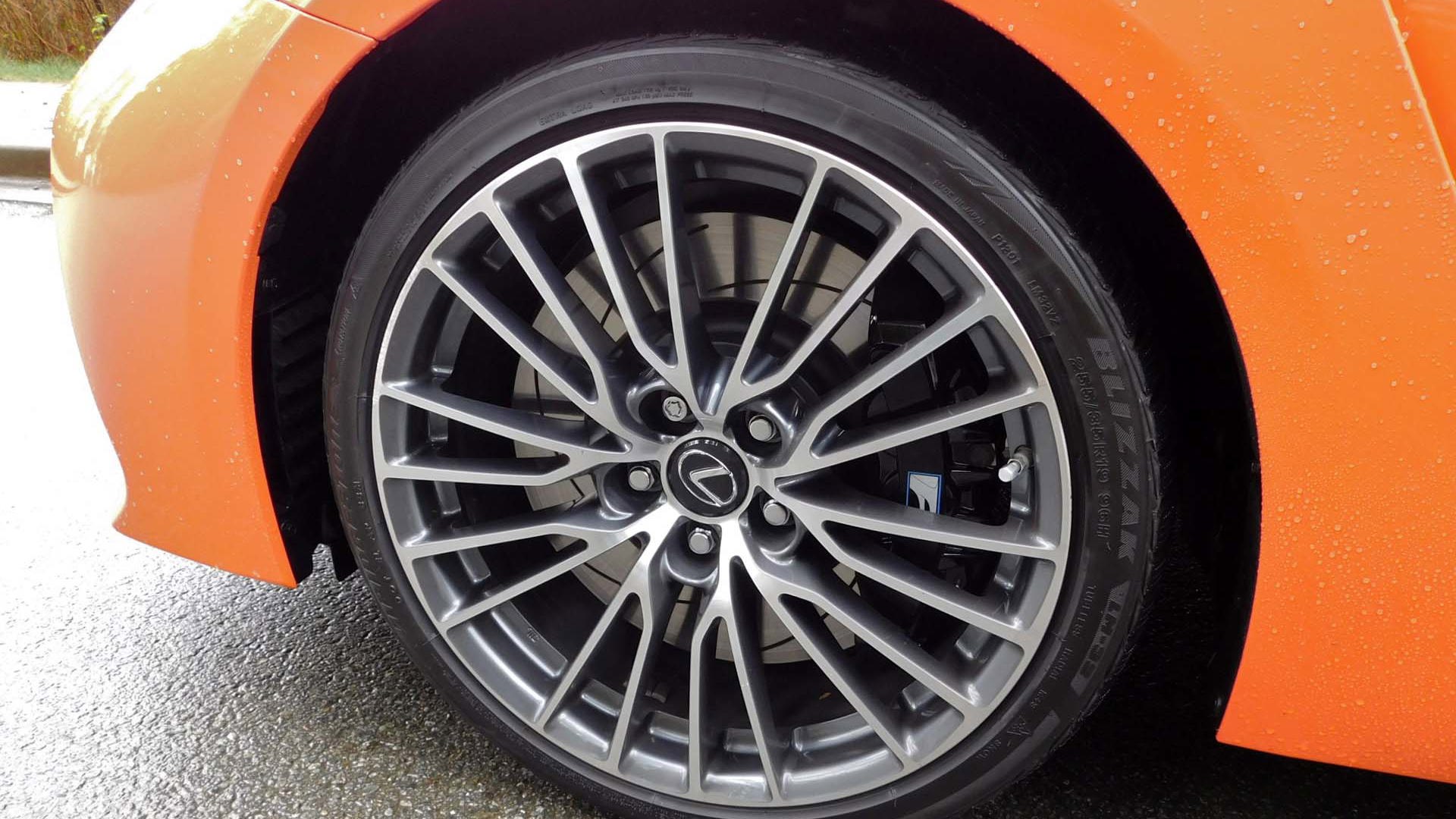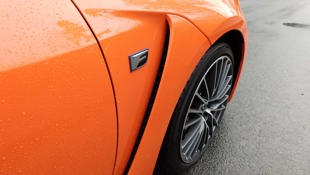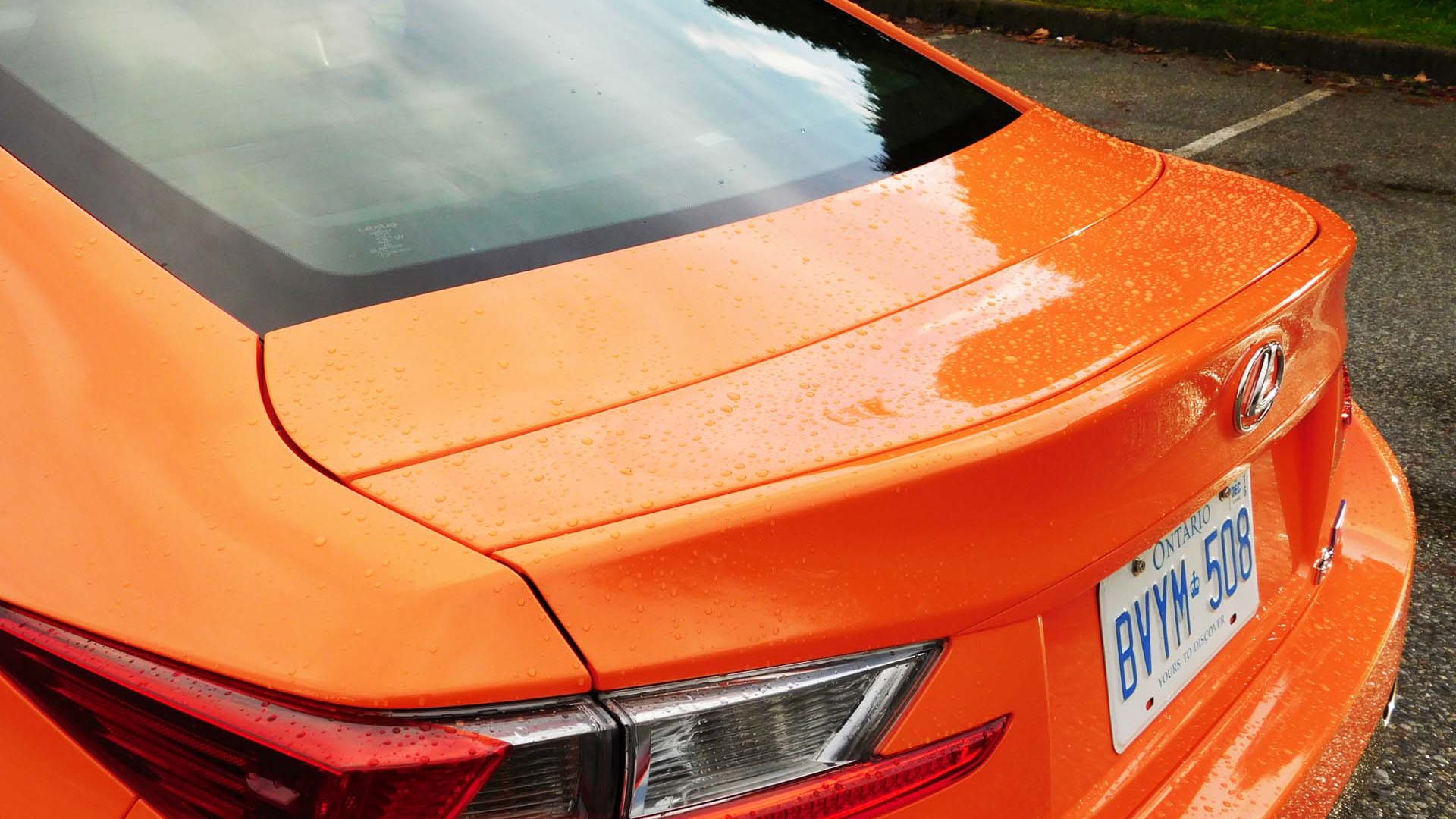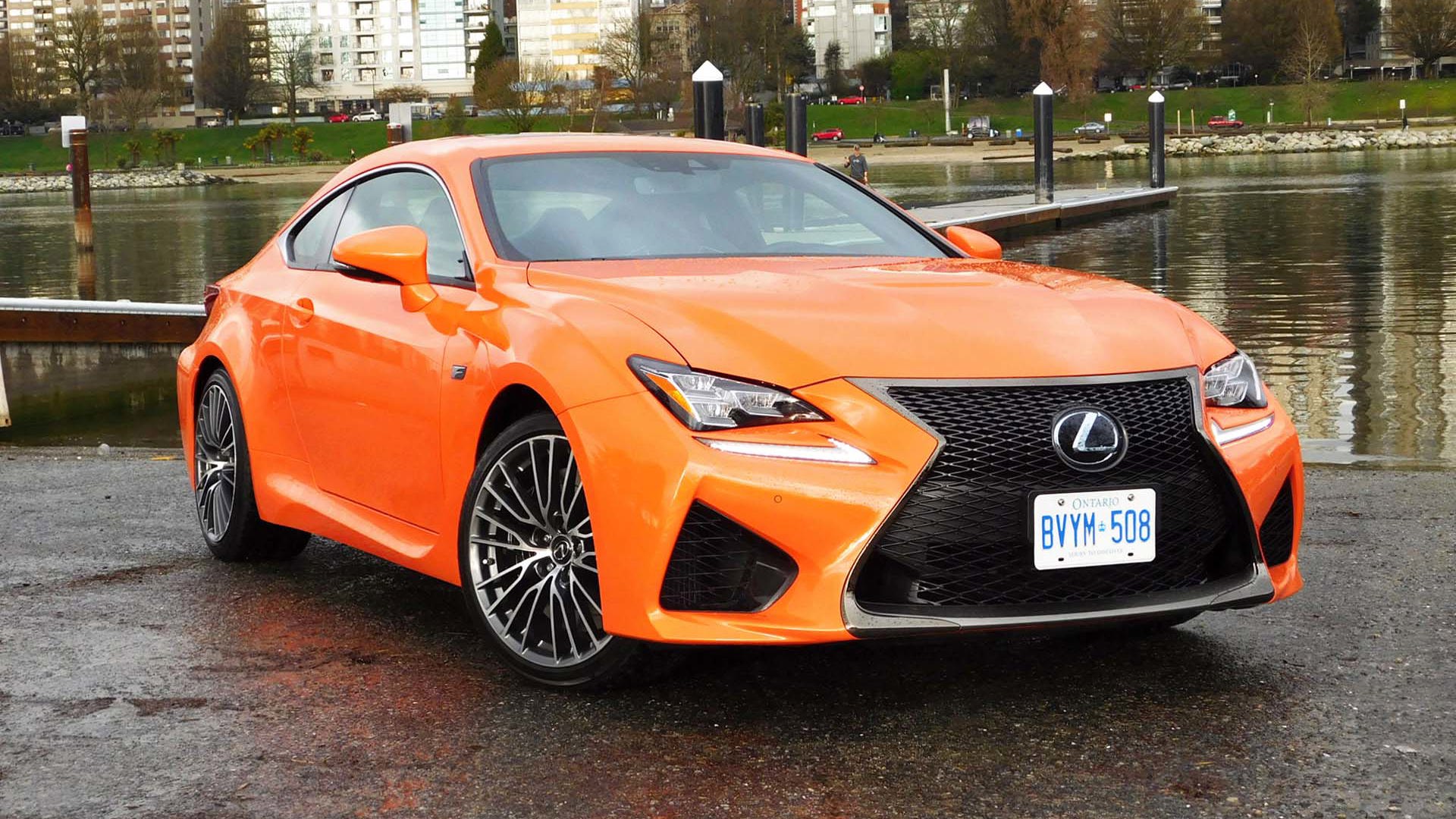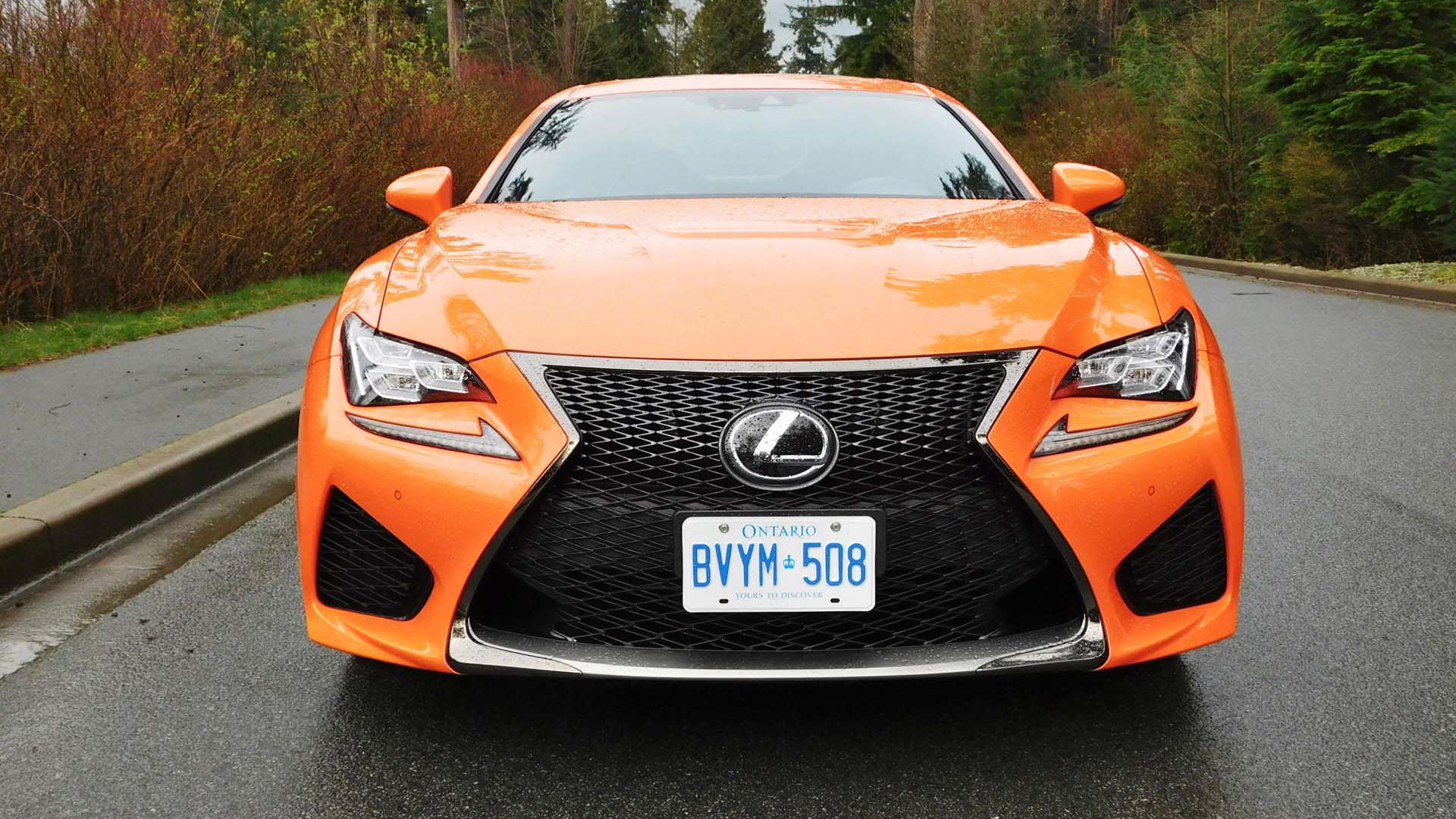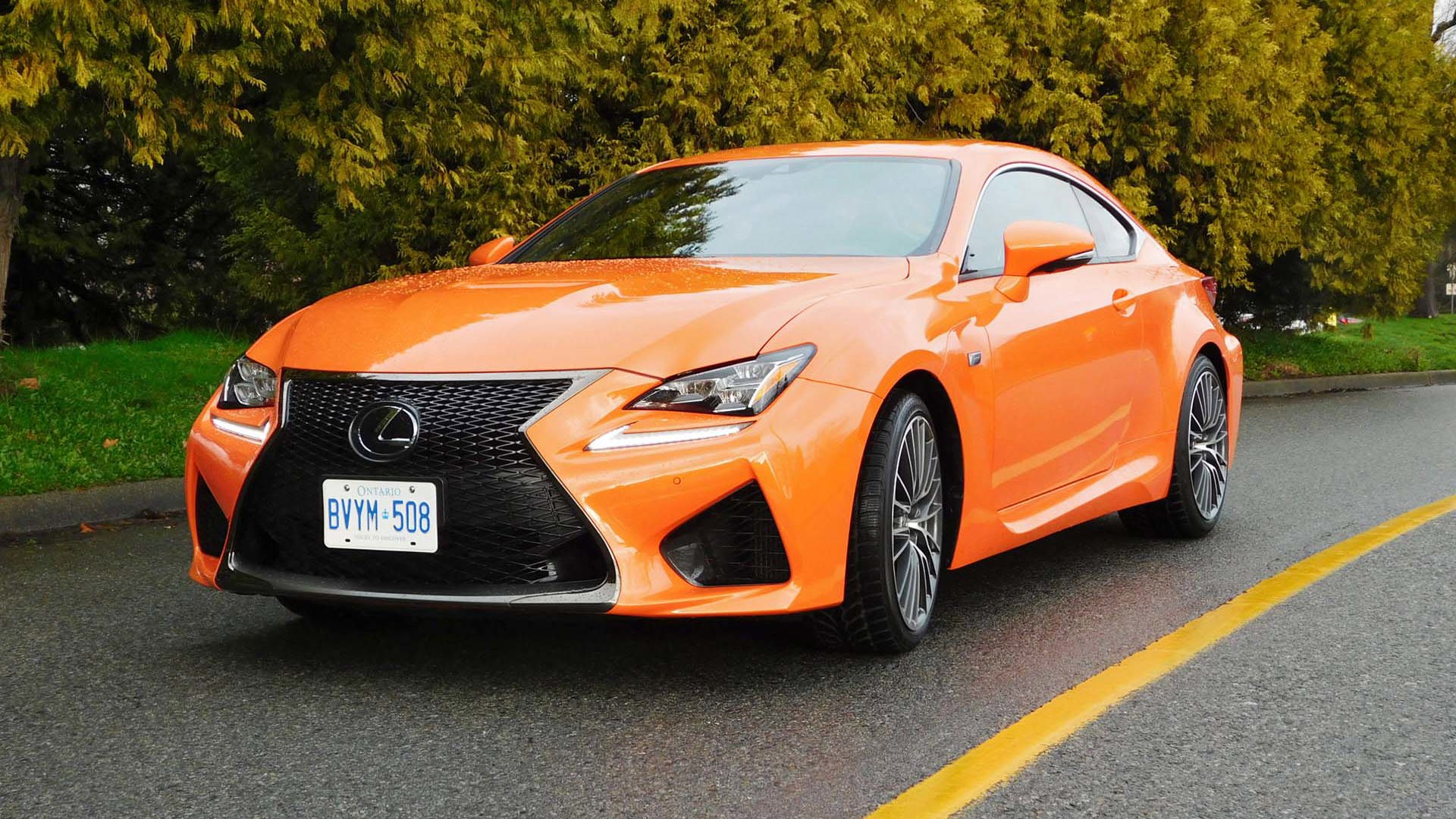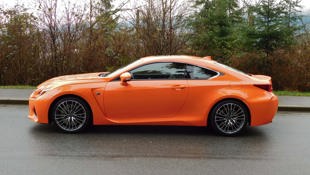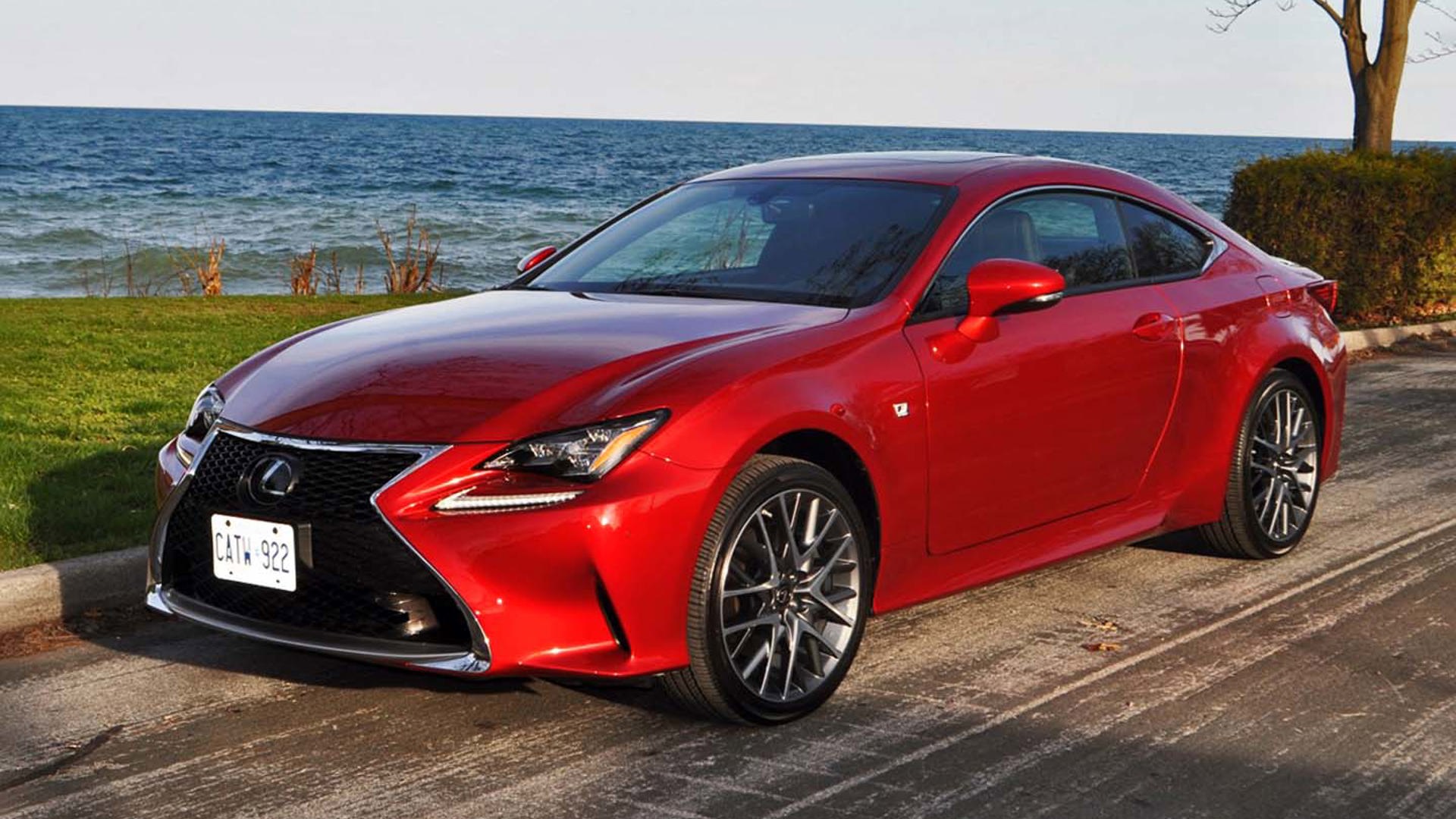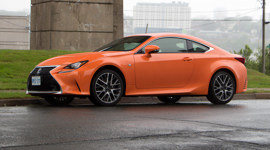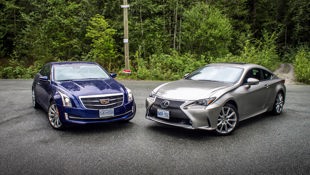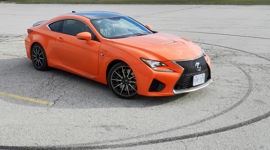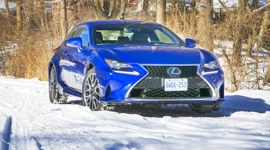 AutoTrader SCORE
AutoTrader SCORE
-
INTERIOR9/10
-
EXTERIOR STYLING7/10
-
FUEL ECONOMY4/10
-
PERFORMANCE9/10
-
COMFORT8/10
Bland. Bland is non-threatening, inoffensive and uncontroversial. Sure, some people may find it dull or unattractive, but not in a disturbing way. It's just bland. Boring.
Lexus apparently brought in all the designers involved with the GS sedan, the IS C convertible and the IS sedan, and told each of them to come up with an aggressive or fast-looking stylistic detail to add on to the basic RC profile.
The Lexus RC F is not bland. It's a compact performance luxury coupe introduced for 2015 to take on the likes of BMW's legendary M4, Cadillac's ATS-V, and the soon-to-arrive 2017 Mercedes-AMG C63 coupe – a pulse-quickening lineup of rivals. It was built from the components of three existing models, with the front end of the Lexus GS sedan, the floorpan of the Lexus IS C convertible (reinforced at the sills for increased rigidity), and a rear end adapted from the Lexus IS sedan.
To give the RC F performance credentials well beyond its garden-variety RC 300 and RC 350 siblings, Lexus engineers dropped in the same hairy-chested 5.0L V8 used in the Lexus GS F and soon-to-arrive LC 500, driving the rear wheels via an eight-speed automatic transmission and backed up by a stiffed chassis, performance-tuned suspension and massive Brembo brakes. To visually differentiate the RC F from its lesser siblings, Lexus apparently brought in all the designers involved with the GS sedan, the IS C convertible and the IS sedan, and told each of them to come up with an aggressive or fast-looking stylistic detail to add on to the basic RC profile.
The resulting car, which carries over essentially unchanged for 2016, is perfect for those who believe that too much is never enough. Up front is a gaping spindle grille flanked by massive brake cooling inlets, with a domed and scooped aluminum hood sitting between unique flared and gill-slitted front fenders. Moving back, bulging rocker sills echo aggressive character lines at the rear bumper, below which there are quad-stacked tailpipes, and above which is a speed-activated pop-up wing, with the whole package riding on some beautifully detailed but rather curb-vulnerable 19-inch alloy wheels.
The overall effect, at least in my test car's Solar Flare orange paint, looks rather like someone carved up a King Kong-sized mango during a game of live Fruit Ninja. That said, the various elements do successfully tie together into a cohesive whole – especially in some of the more subdued paint colours on offer – and the RC F is definitely attention getting, if a little polarizing (mostly the 30-and-under set loved it, but the 35-plus set not so much). Vancouver's Lamborghini-driving high school students gave it favourable reviews, so clearly Lexus is onto something (and if you find it all a bit much, you can always pony up for the drop-dead gorgeous Lexus LC 500 coupe).
Under the sheetmetal: Engineering Emotion in the Lexus GS F
Inside, the RC F distinguishes itself with a richly-appointed interior featuring superbly comfortable (and good looking) perforated leather front sport seats that hold you firmly in place during spirited cornering without constricting you when cruising around town. A high, full-length centre console lends an fighter-jet ambiance to the cockpit, but no fighter jet was ever fitted out this lavishly: in standard trim, the RC F features a soft-top dash, stitched Alcantara suede instrument hood, Alcantara console top and armrests, aluminized fibreglass weave trim (carbon fibre trim is available with the performance package), brushed aluminum inserts, upholstered console sides and cloth-wrapped pillars. The only bits that appear to have caught the attention of the accounting department are the the park brake, which is an old-school pedal-operated unit, and the door lowers and lower dash, which use standard rigid plastic.
On the comfort and convenience front, the RC F includes all of the expected luxury accoutrements including a full suite of driver-assistance safety technology, automatic dual-zone climate control, power moonroof, proximity access with pushbutton start, heated and ventilated front seats, heated leather-wrapped steering wheel, frameless auto-dimming rearview mirror, LED ambient lighting, voice-activated navigation system, 7-inch infotainment display, and a phenomenal-sounding 17-speaker Mark Levinson audio system with twin USB inputs, satellite radio, and Bluetooth connectivity.
Control of the infotainment system is via a new touchpad controller that I found takes some getting used to. It understands smart-phone type pinch and swipe commands, so that's good, but you need to push down on it some to get the cursor moving, then push further to make selections, and I found it difficult to differentiate between the two levels of pressure, especially when driving.
In purely practical matters the RC F has a decent-size trunk for a coupe, at 287 litres, but the back seat isn't nearly so accommodating: At 5'11" I found that I could indeed "sit behind myself" – just barely – but I had my knees pressed firmly into the front seatback and my head brushing the roof. On the bright side the seatback is soft-upholstered, so my knees weren't in particular discomfort. The cabin also has somewhat restricted outward visibility (no surprise there) and is somewhat shy of storage cubbies: There's a decent-size console bin, but the door pockets are small and there's nowhere on the console to stow on-hand items like keys, cellphones, parking-stubs or what-have-you. A final quibble is that the pushbutton ignition lacks retained accessory power, which I found annoying every time I shut the car off and my music stopped mid-beat.
On the road, the RC F displayed a real Jekyll-and-Hyde persona, but you have to prod a little to awaken Mr. Hyde. The naturally-aspirated 5.0L V8 cranks out an impressive 467 hp and 388 lb-ft of torque, but maximum torque doesn't kick in until 4,800 rpm so you need to rev the engine fairly high to really get into the real meat of the powerband. This isn't a problem when you're thrashing the RC F along a deserted backroad in Sport S or Sport S+ mode, because the big V8 loves to rev and it sounds marvellous (in an electronically-enhanced sort of way) when doing so. However, when you're tooling around town in Normal mode with the transmission doing the shifting, the RC F keeps the revs down to improve efficiency, and so a quick poke of the throttle to pass a slow-moving econobox, for example, doesn't give the beast time to awaken and can produce surprising little result for such a well-endowed car. If you want speeeeeeeed, you have to plan ahead a little and get all the right buttons pushed.
The flip side to all this is twofold: First, aside from its rather firm ride the RC F is more relaxed and tractable in Normal mode than many other performance cars I've driven. Second, if you do push the right buttons you can awaken some really interesting features. Indeed in this sense the RC F's function rather matches its youth-oriented form, in that it means those who still haven't entirely figured out their smart phones may need help from a 17-year-old to find all the various features in the RC F.
Normal, Eco, Sport S and Sport S+ modes are all fairly easy to find and straightforward in concept, remapping the throttle and transmission settings to make the car either more relaxed and efficient, or more eager and responsive. Each mode also has its own custom-configured instrument display, with the tachometer appearance changing to reflect the mode: Normal mode looks normal, Sport S looks sportier (and marks the maximum revs during shifts), Sport S+ looks even more sporty, and Eco replaces the tach entirely with a sort of blue turbine display that dwindles if you dip too heavily into the throttle. I'm not actually clear what this mode is really intended for in a car like the RC F, beyond perhaps an unconscious admission that you bought the wrong car and really wanted a hybrid. I turned it off almost immediately after trying it, and didn't bother with it again.
Beyond these basic modes, if you pry deeply enough into the car's hidden levels of hooliganism you can unlock further modes including Expert mode (turns off the vehicle stability control and pre-crash braking systems), Track mode and Slalom mode, and you can display things like a G-force indicator, lap timer and rear wing position indicator.
Sadly, while I was able to play around with the Sport S and Sport S+ mode and get a glimpse of the RC F's awesome potential, I didn't have access to suitable venue for properly evaluating the Expert, Track and Slalom modes. What I can say is that even when shod with winter tires (Blizzak LM-32 low-profile rubber) the RC F corners with impressive precision and tenacious grip. It feels much lighter than its 1,795 kg (3,958 lb) curb weight might suggest, and it displays good balance and nice steering weight, although little real steering feel. In manual mode the transmission responds quickly to shift inputs, and it has decent-sized paddle shifters (although I'd prefer them on column rather than wheel).
As for speed, if you let the transmission take care of the shifting the RC F will blast from 0-100 km/h in 4.6 seconds with a satisfying bellow, and it'll keep pulling well past any North American speed limit (the smallish speedometer reads up to 340 km/h, although the car is electronically limited to 274 km/h). Suffice to say, it's good fun to drive, provided you can find roads that allow it to stretch its legs a little.
If fuel economy matters to you, the RC F is officially rated at 15.0 / 9.5 L/100 km (city/highway), but even with the engine's fuel-efficiency party trick of switching into Atkinson cycle mode at low steady-state revs, I was never able to get fuel consumption down past 11.1 L/100 km on the highway. My overall average, after a week of spirited mostly-city driving, was very nearly 20 L/100 km.
Canadian pricing for all this luxury and performance starts at $83,150 (not including destination fees), which is steeper than the U.S. base price but includes more standard features such as the leather upholstery and heated seats. Options are limited to a $7,400 Performance Package that substitutes a torque-vectoring differential in place of the standard Torsen limited-slip rear unit, substitutes a carbon fibre rear wing and carbon fibre roof (without moonroof) in place of the standard equipment, and adds unique alloy wheels. My test car was option-free, so including the $2,045 freight charge it came to a grand total of $85,195. It's a fair chunk of change for sure – indeed it's more than the starting price of the Cadillac ATS-V or the BMW M4. But neither of those cars are as well-equipped as the Lexus in base form, and when comparably equipped the RC F is more than price competitive. And it's certainly much less expensive than a Lamborghini.
| Warranty: 4 years/80,000 km; 6 years/110,000 km powertrain; 6 years/unlimited distance corrosion perforation; 4 years/unlimited distance roadside assistance Competitors: |
| Model Tested | 2016 Lexus RC F |
|---|---|
| Base Price | $83,150 |
| A/C Tax | $100 |
| Destination Fee | $2,045 |
| Price as Tested | $85,295 |
|
Optional Equipment
None.
|
|
